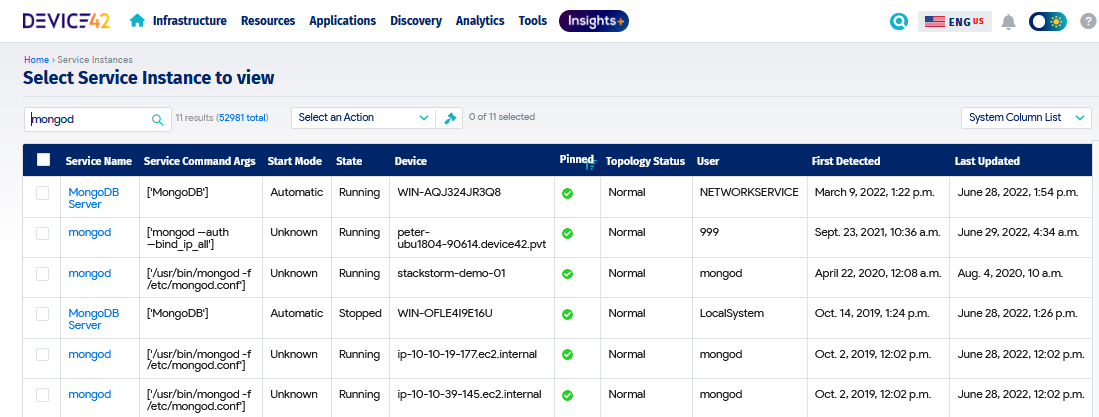Application Groups
Overview
Affinity Groups have been renamed Application Groups. AppFocus Filters are now called Application Group Calculation Rules.
Application Groups are an opinionated view of the impactful applications and their dependencies in your environment. They are configurable via Calculation Rules (and templates). Application Groups are based on the communication patterns observed in your environment.
After discovery has been run within your environment (we recommend a 30-day minimum period), the detailed application dependency information that has been collected should now be ready to use with Application Groups.
The collected information includes service names and communication details. Application Groups are then calculated based on client communication to a particular service listening on a TCP or UDP port and server process.
You define the services critical to your use case before Application Groups are processed. The result is a visualized grouping of communication patterns.
Using Application Groups
Please note that you need an ADM license to use Application Groups. Email support at support@device42.com to enable this module in your Main Appliance.
Application Groups are calculated with Calculation Rules based on Logic Templates, offering advanced capabilities and customizations beyond the previous reliance on pinning services as a starting point and DOQL queries. You can use a range of services, devices, and Application Components as starting points for your Application Groups.
See the Calculation Rules page to learn how to create and manage Calculation Rules and Logic Templates.

Application Group List Page
Navigate to the list page under Applications > Application Groups.
-
Start by creating a new Calculation Rule(1) to generate Application Group(s) and suggestions.
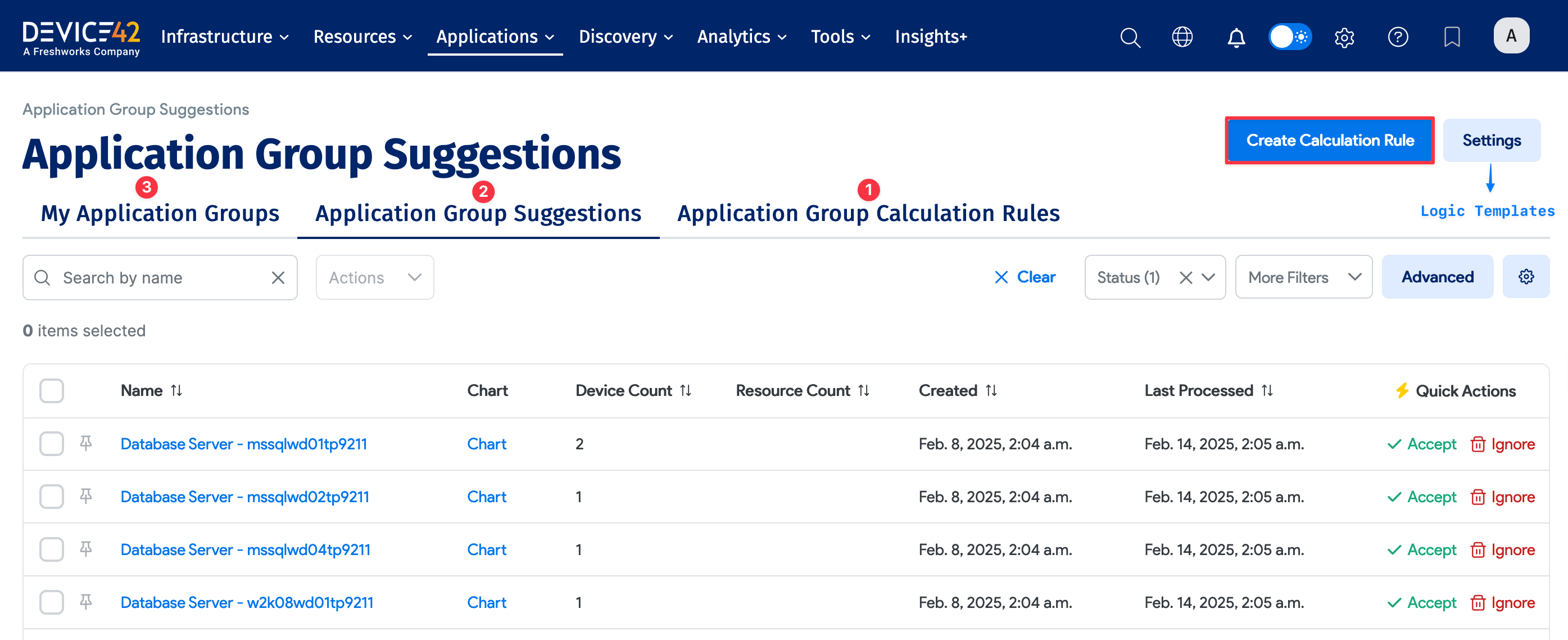
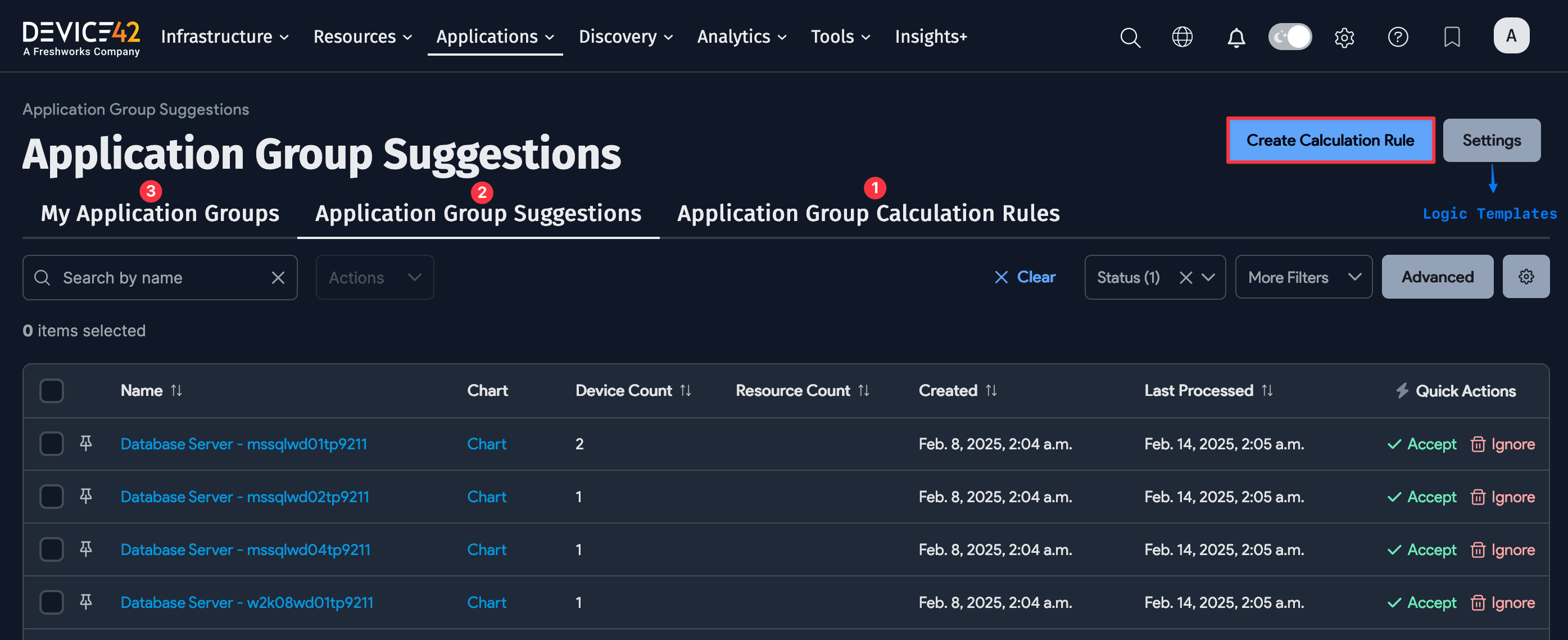
-
For each suggestion, you can click Accept or Ignore on the suggested Application Group. If you select Ignore, an Undo button pops up so you can revert the action.
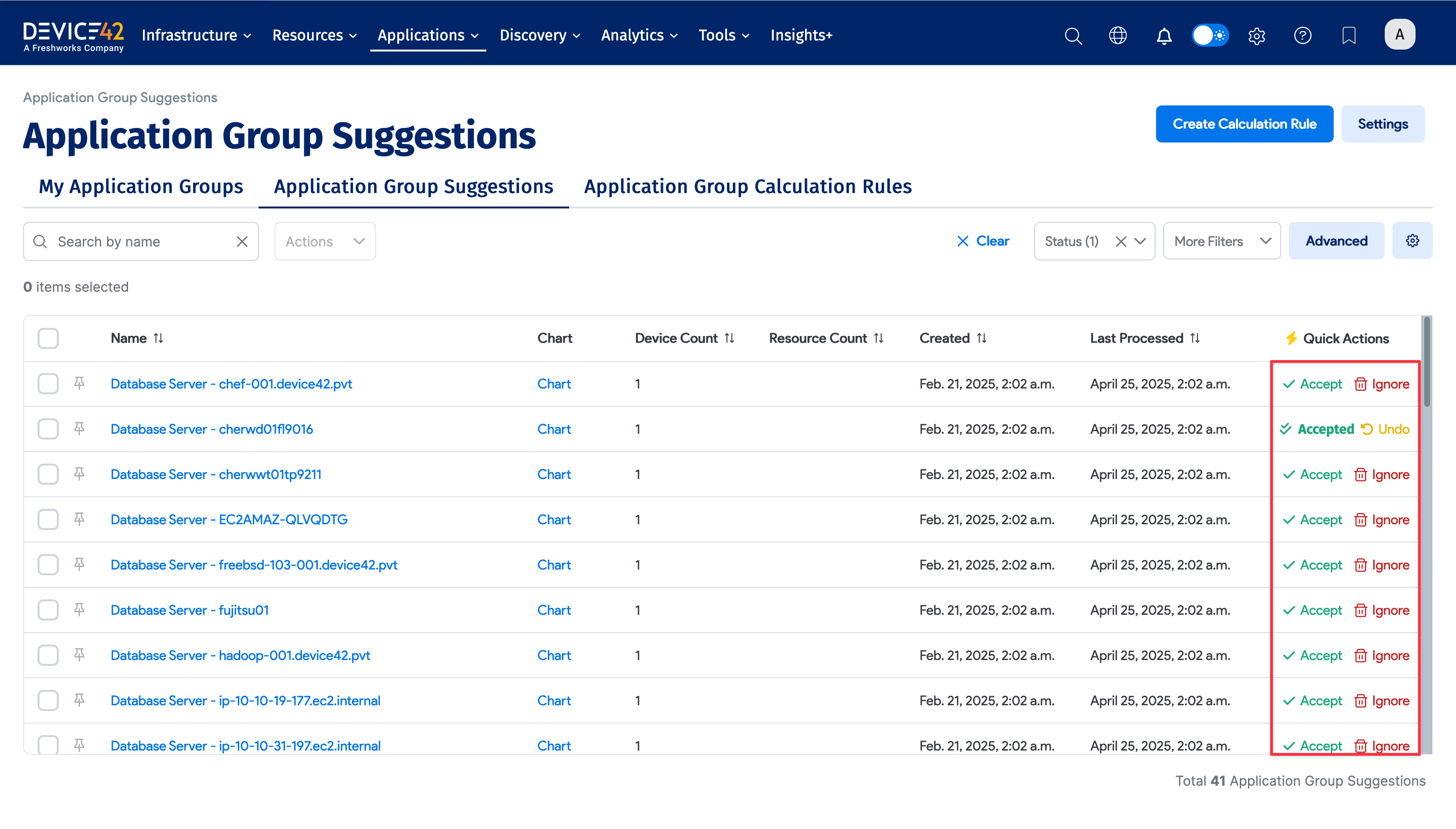
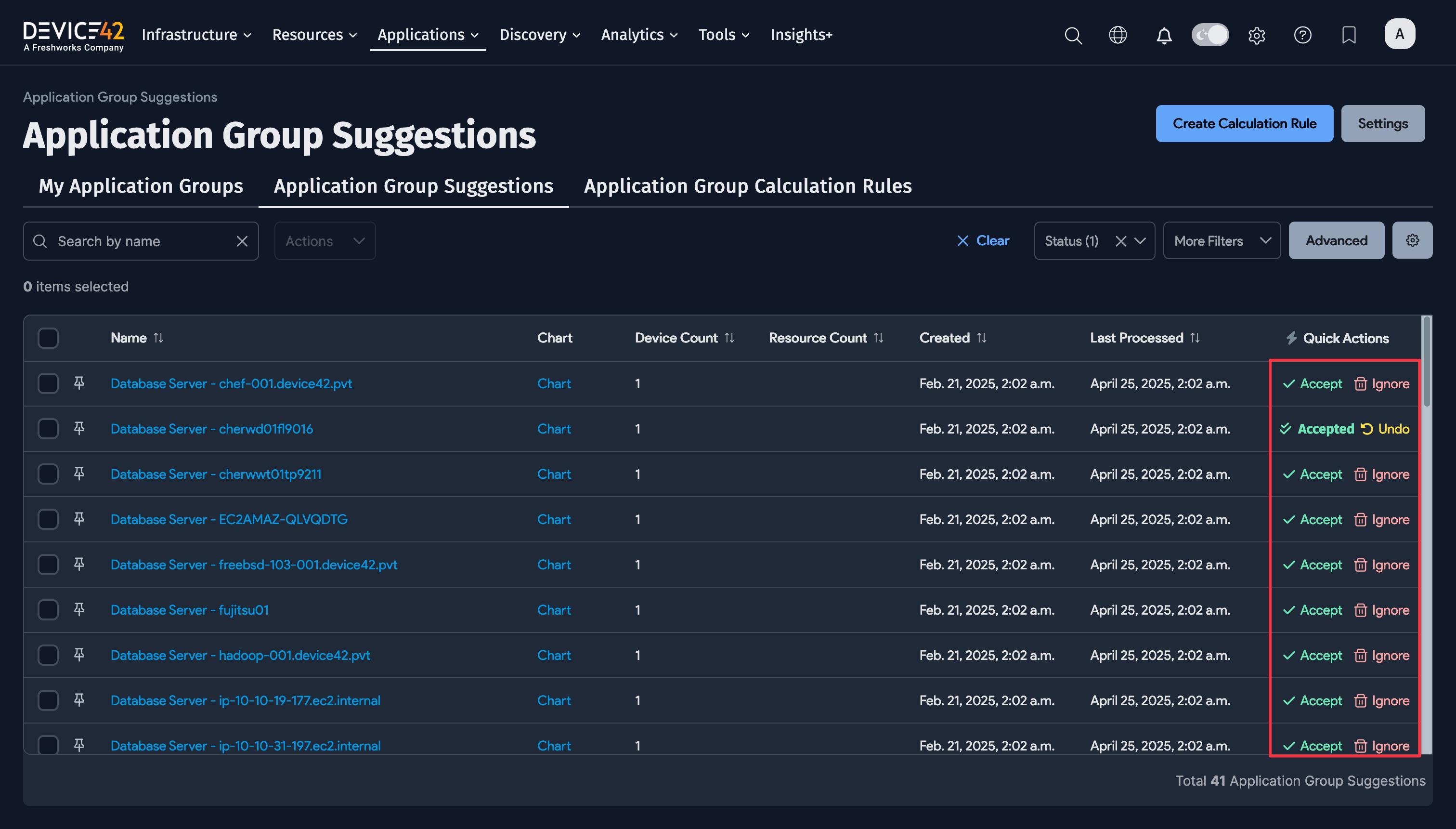
-
You can also click Accept or Ignore on the View/Edit page for each suggestion.
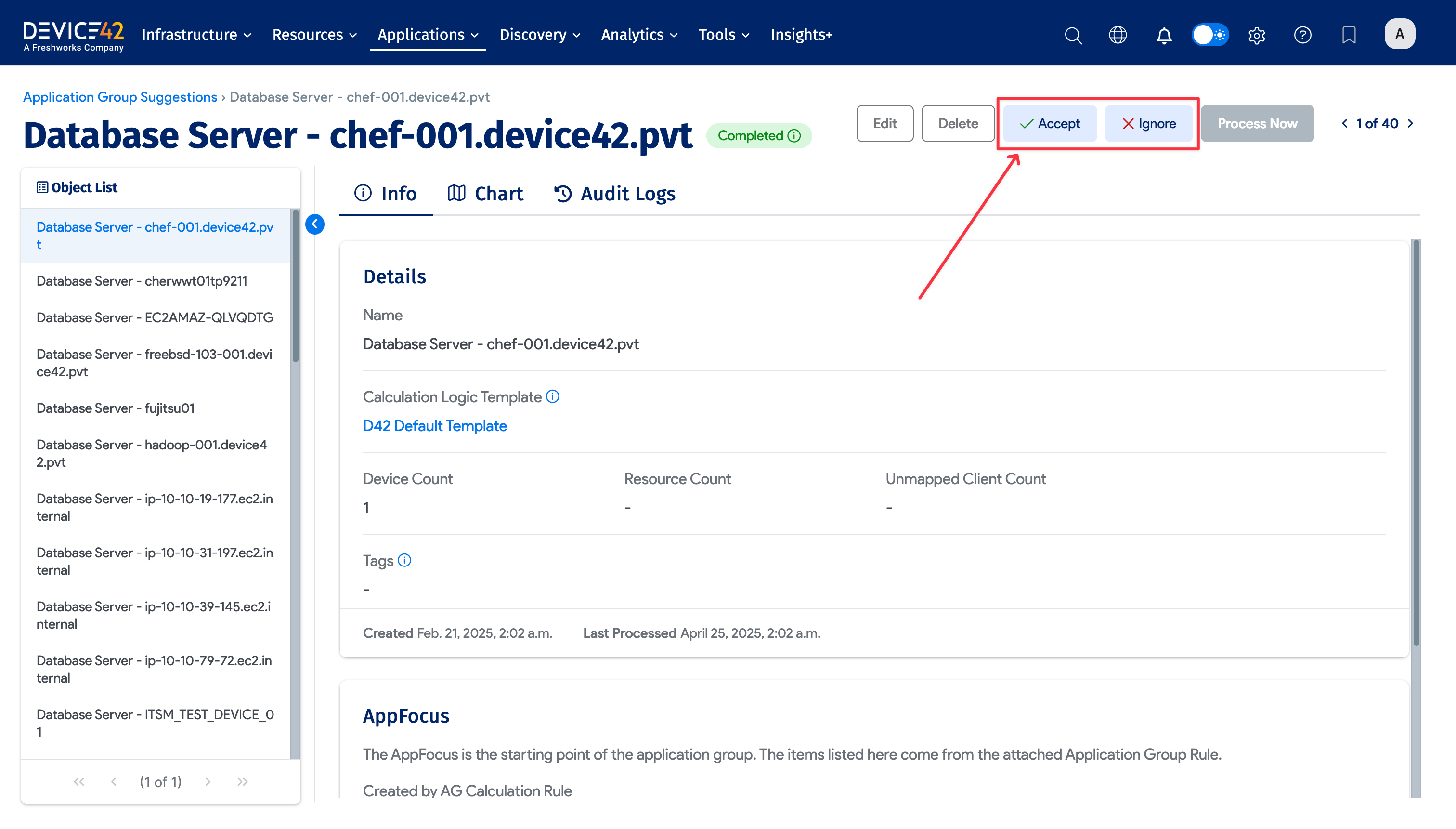
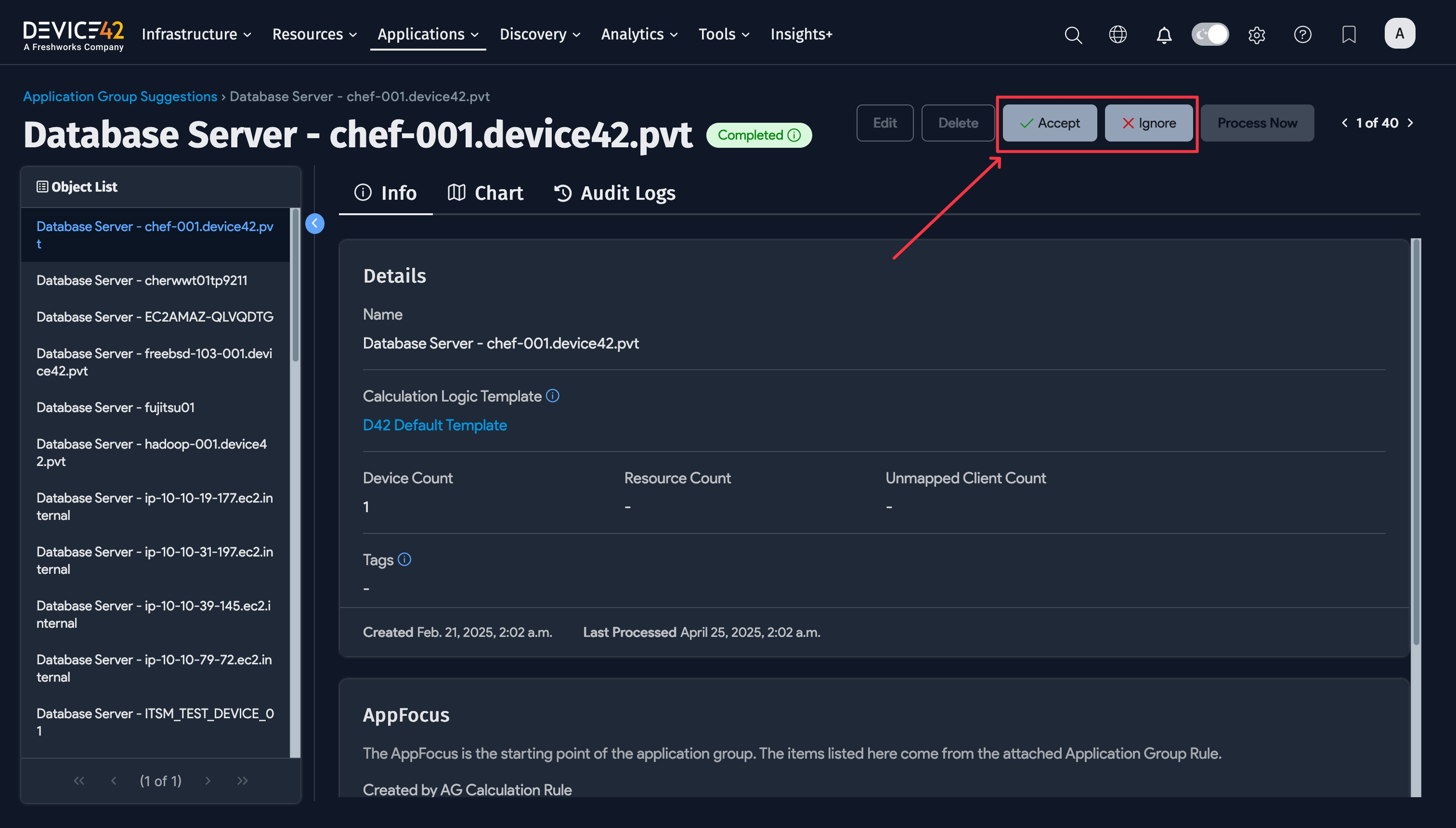
-
Under the My Application Groups (3) tab, you can bulk manage Application Groups using options from the Actions menu, view the Impact Charts of your Application Groups, and search and filter the records. You can also pin Application Groups to keep important items at the top of the list.
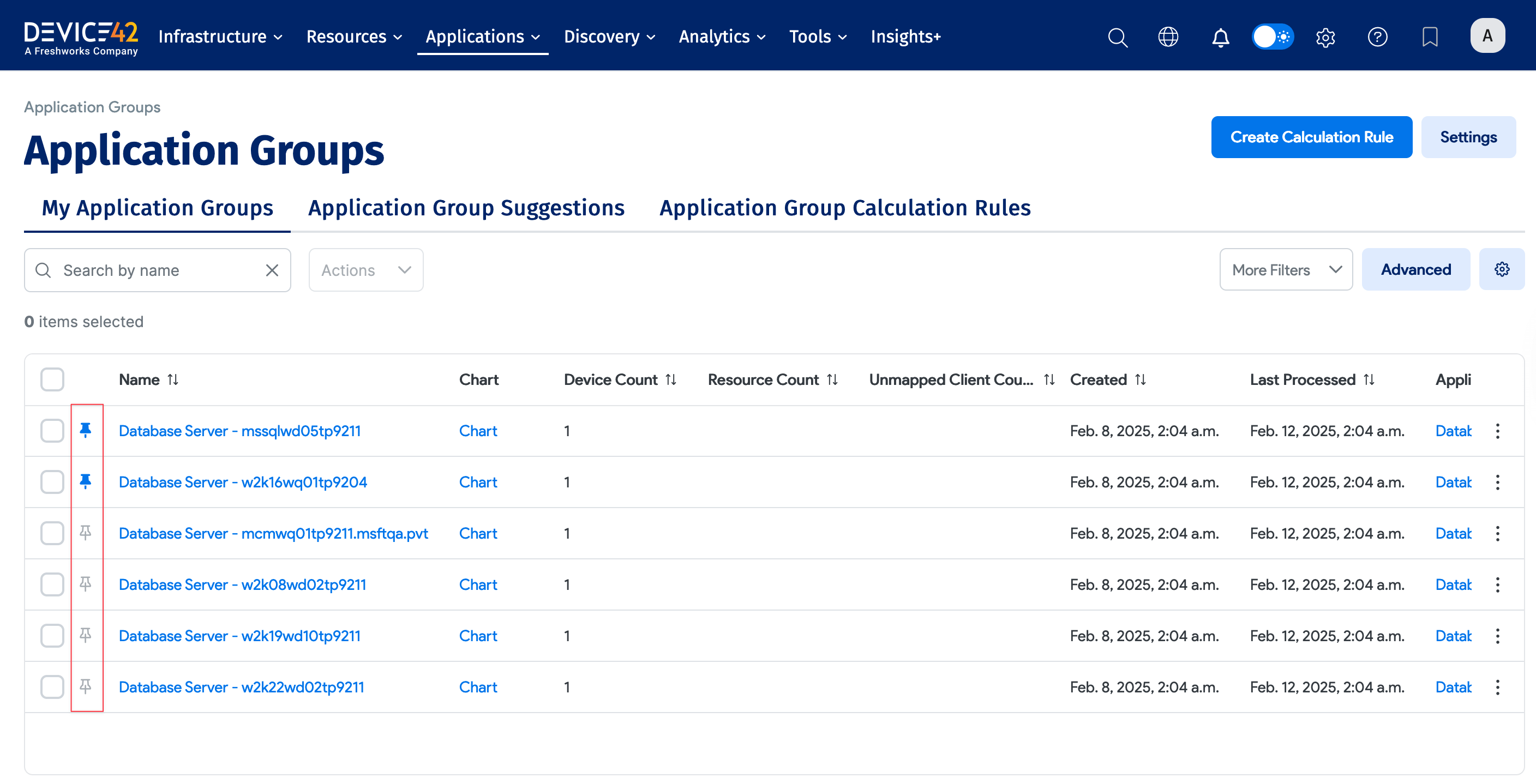
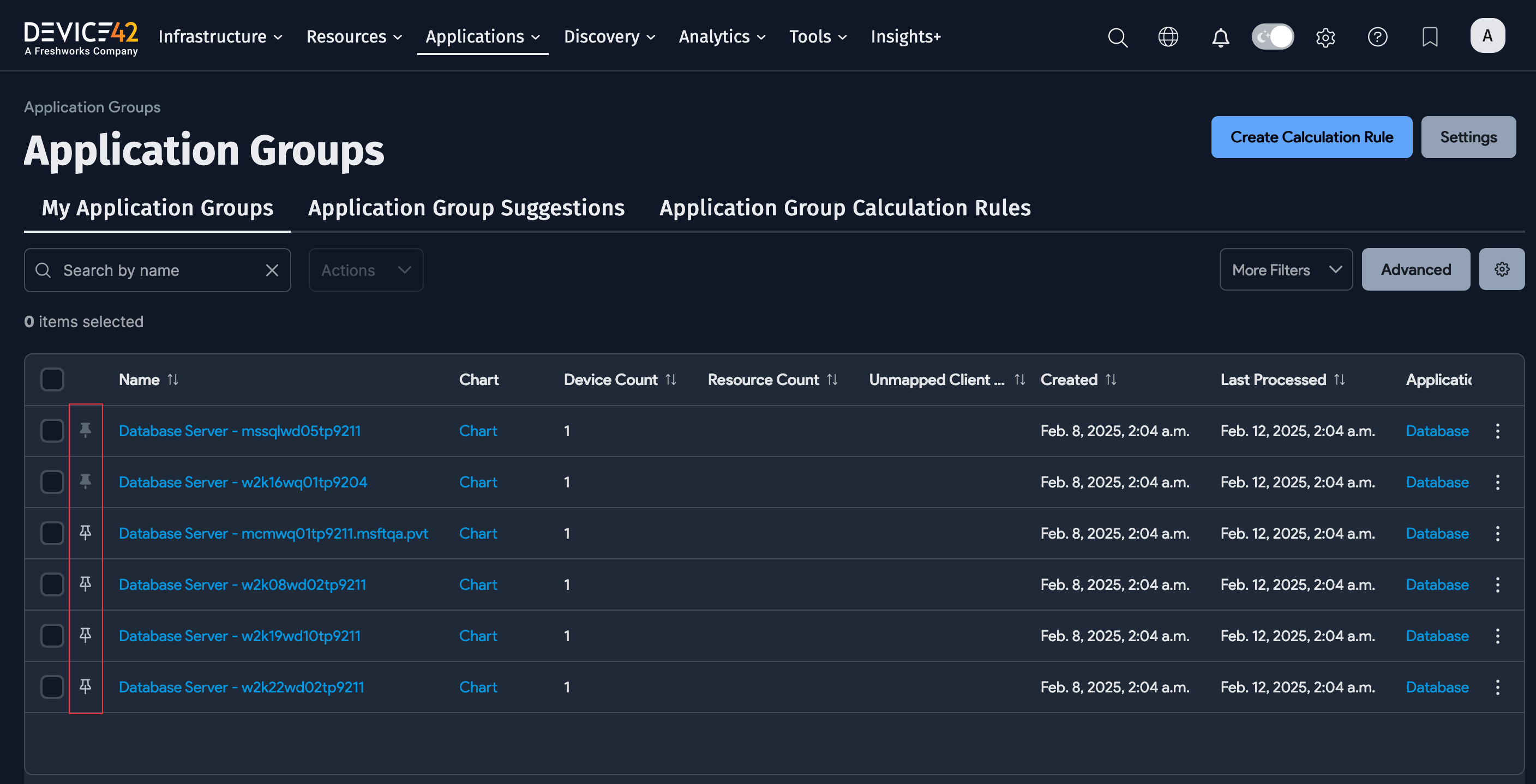
Settings and Logic Templates
To navigate to the Application Group settings, click the Settings button in the top-right corner of the Application Groups page.


From the Application Group Settings page, you can:
- Enable or disable Application Groups.
- See the Status of Application Group calculations and the Last Processed date and time.
- Create and manage Calculation Logic Templates, which allow you to define the rules and conditions regarding Application Group dependencies. You'll specify which Logic Template to use when configuring a Calculation Rule to generate Application Groups.
You can use the predefined D42 Default Template or create your own. See the Calculation Rules documentation for descriptions of the Logic Template fields and how the templates fit into the ADM workflow.

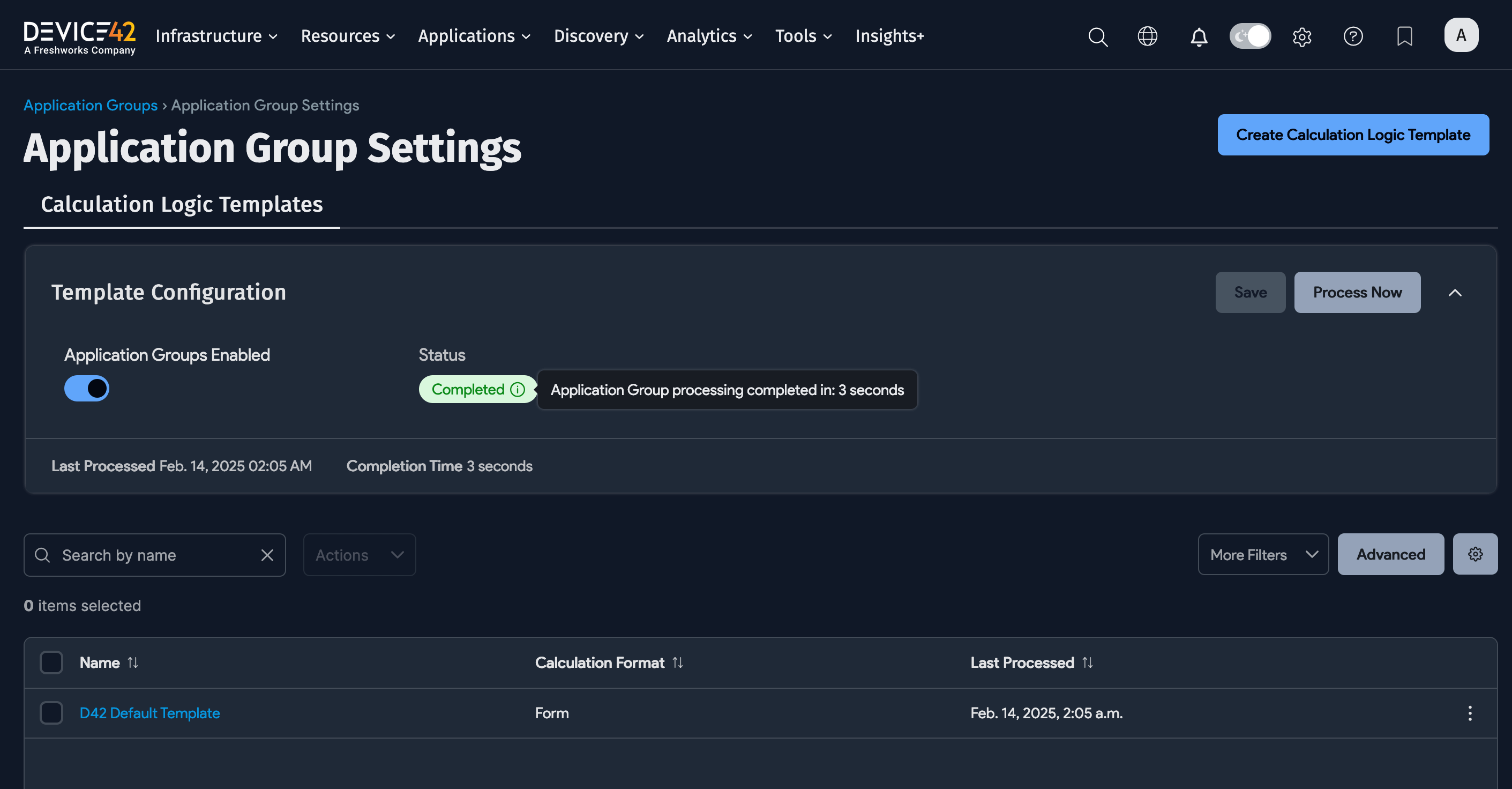
Processing Application Groups
By default, enabled Application Groups are calculated daily at 2 AM. You can run Application Groups at any time from several locations in the UI:
-
Click the ellipsis icon and select Run Background processing.
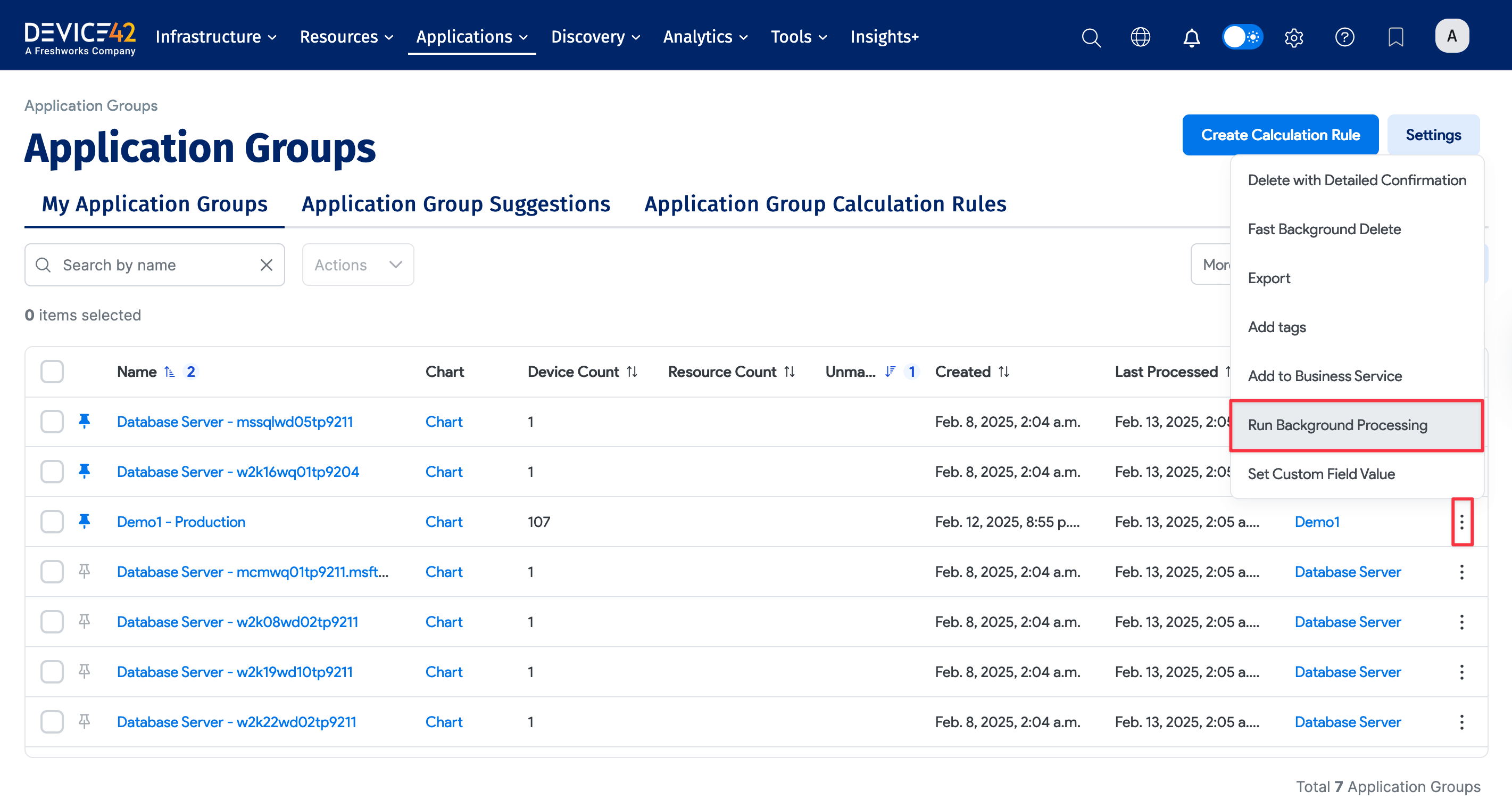
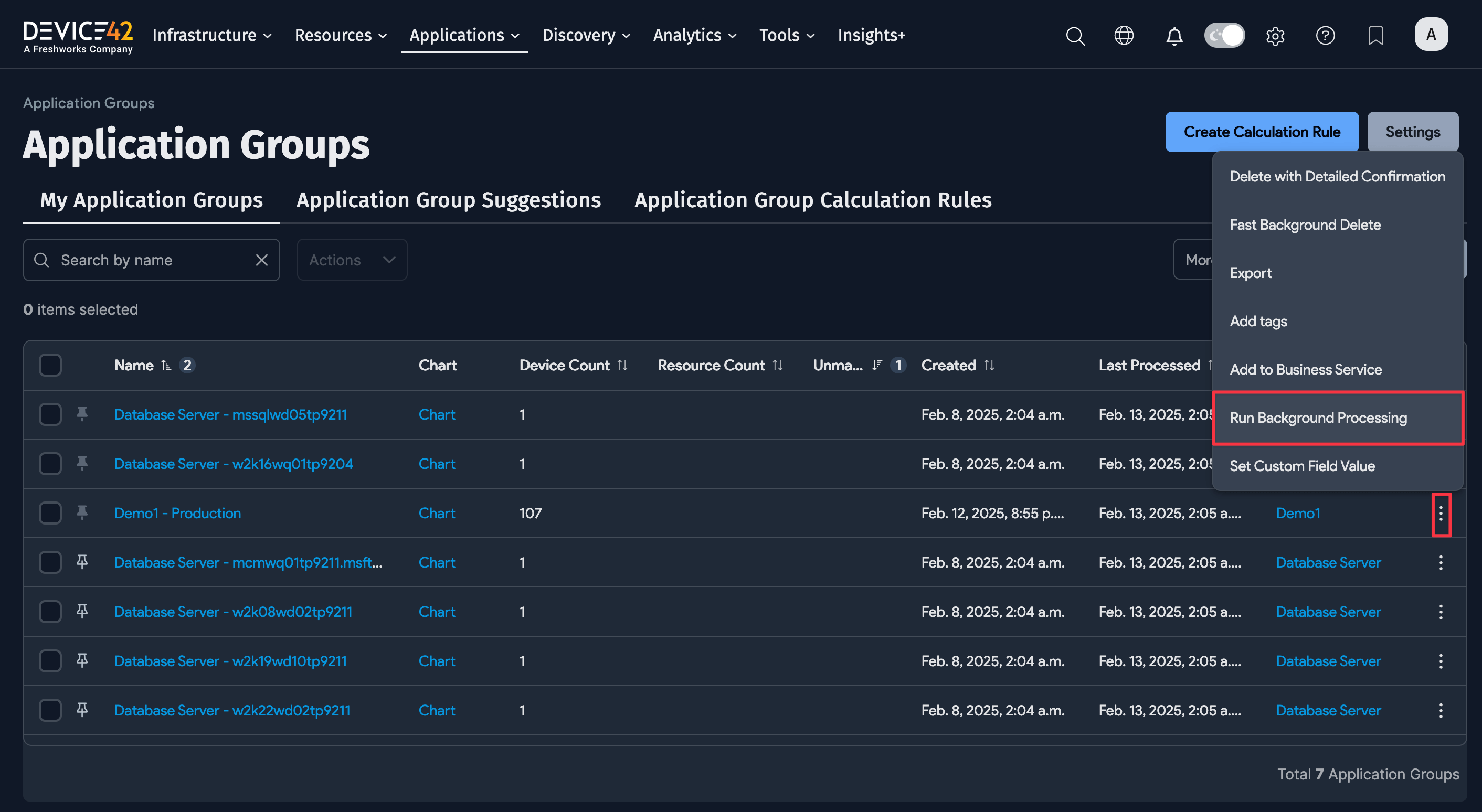
-
Bulk run selected Application Groups from the Actions menu by selecting Run Background processing.

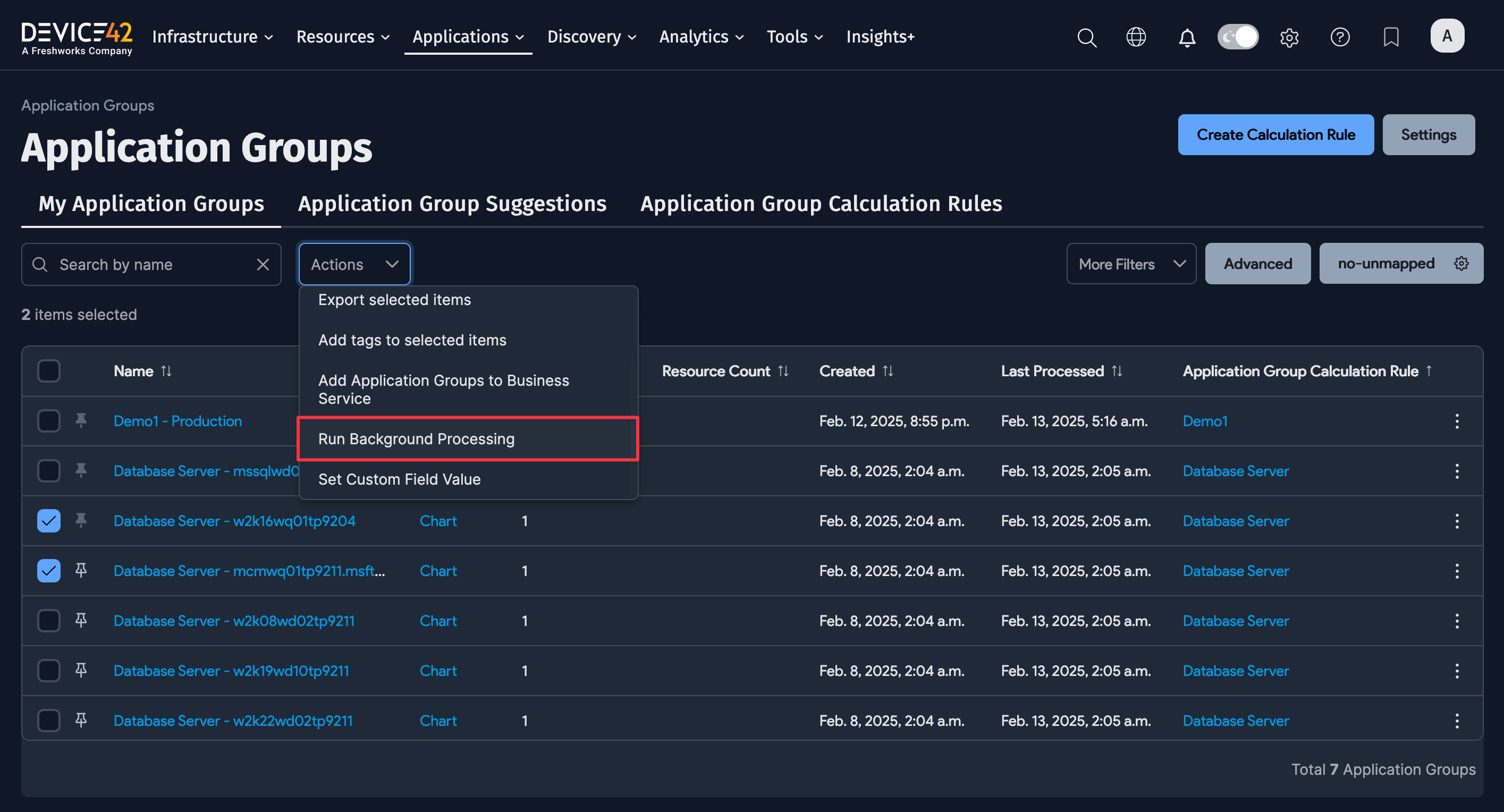
-
Select an Application Group from the list page and click Process Now.
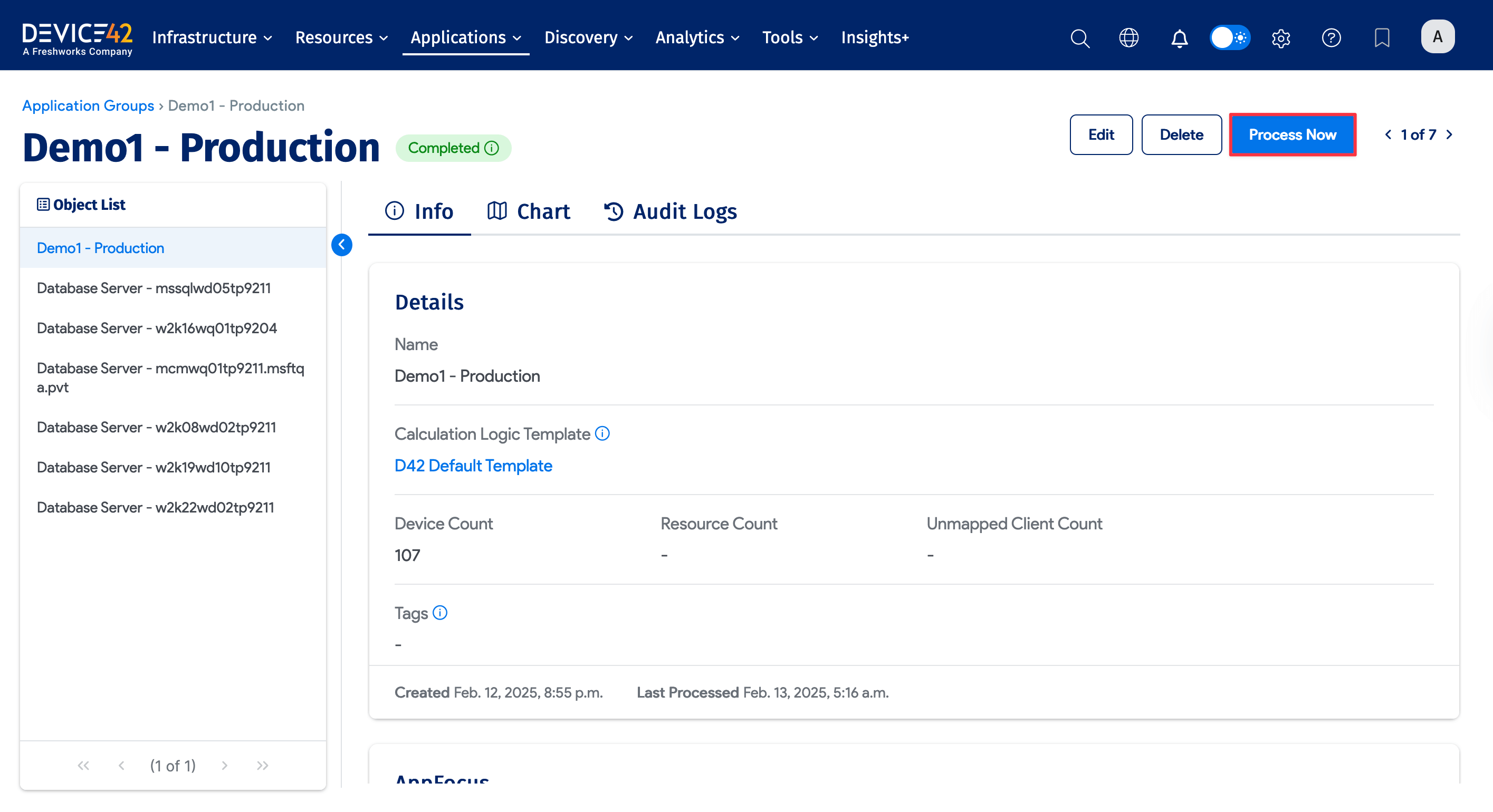
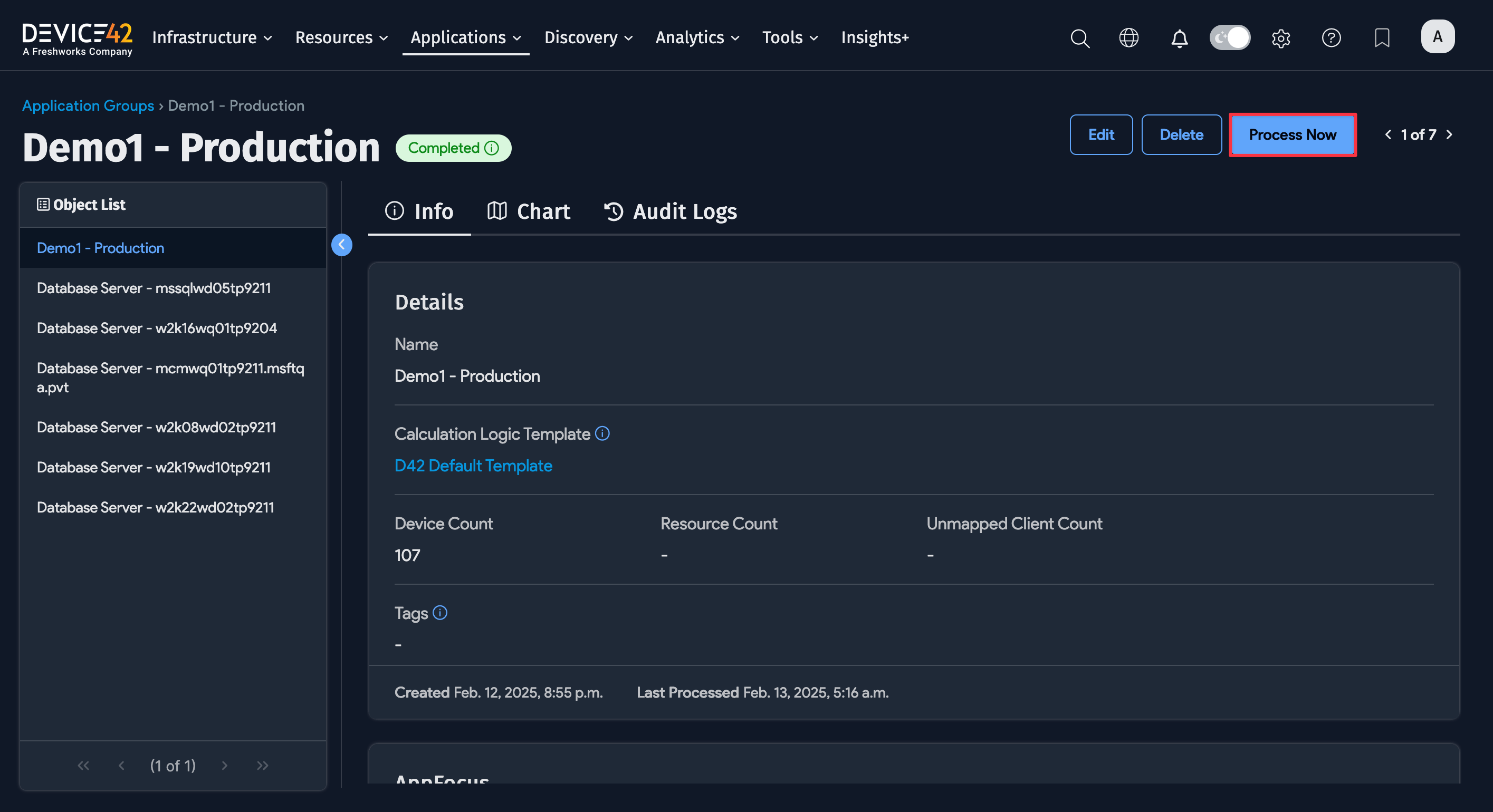
Hover over the status chip for processing details.
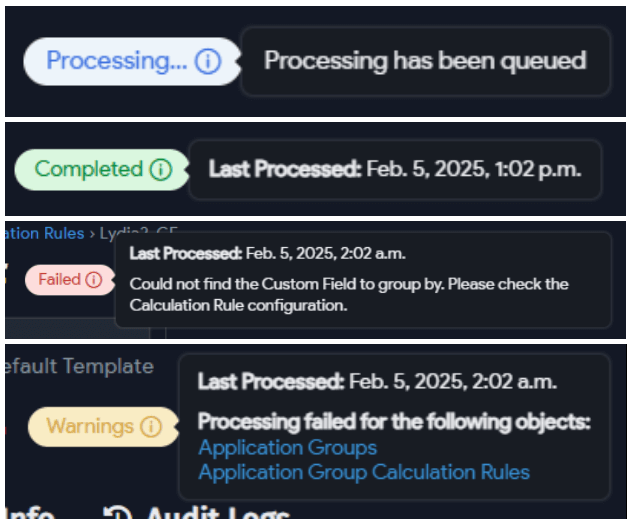
Issues Processing Application Groups
Unmanaged Application Groups
Application Groups won't run unless they are associated with a Calculation Rule. If you delete an associated Calculation Rule or have a legacy Affinity Group with a single resource, you'll see the following notification:
The Application Group is unmanaged as it has no Calculation Rule associated. In order to add it to processing, add a fixed rule with the items in focus.

Edit a rule or create a new rule and select Fixed as the Starting Point. Add the orphaned resource to the rule.
Invalidated Application Groups
-
If you change the Group By configuration of a Calculation Rule, the Application Group will be invalidated. You'll get the following message:
This Application Group has been invalidated because its AppFocus no longer matches its Calculation Rule.

Reverting to the exact original Group By value will reactivate the existing application group.
-
If an associated Calculation Rule includes a Custom Field grouping and that Custom Field is deleted, the Application Group will be invalidated and processing will fail.
Could not find the Custom Field to group by. Please check the Calculation Rule configuration.

Charts
-
Under the My Application Groups tab, click on the Chart link next to an Application Group name to view the Application Group chart.
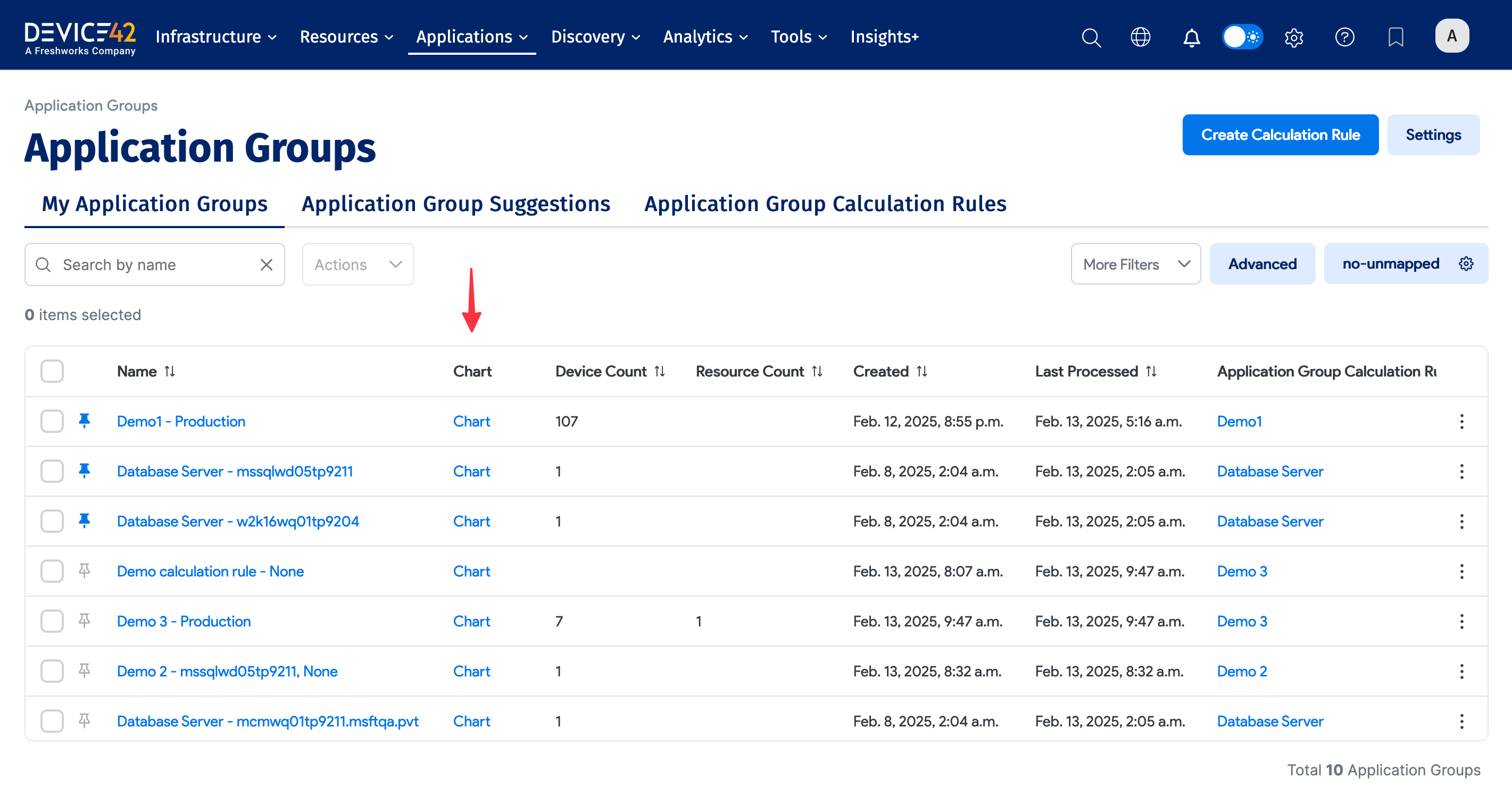
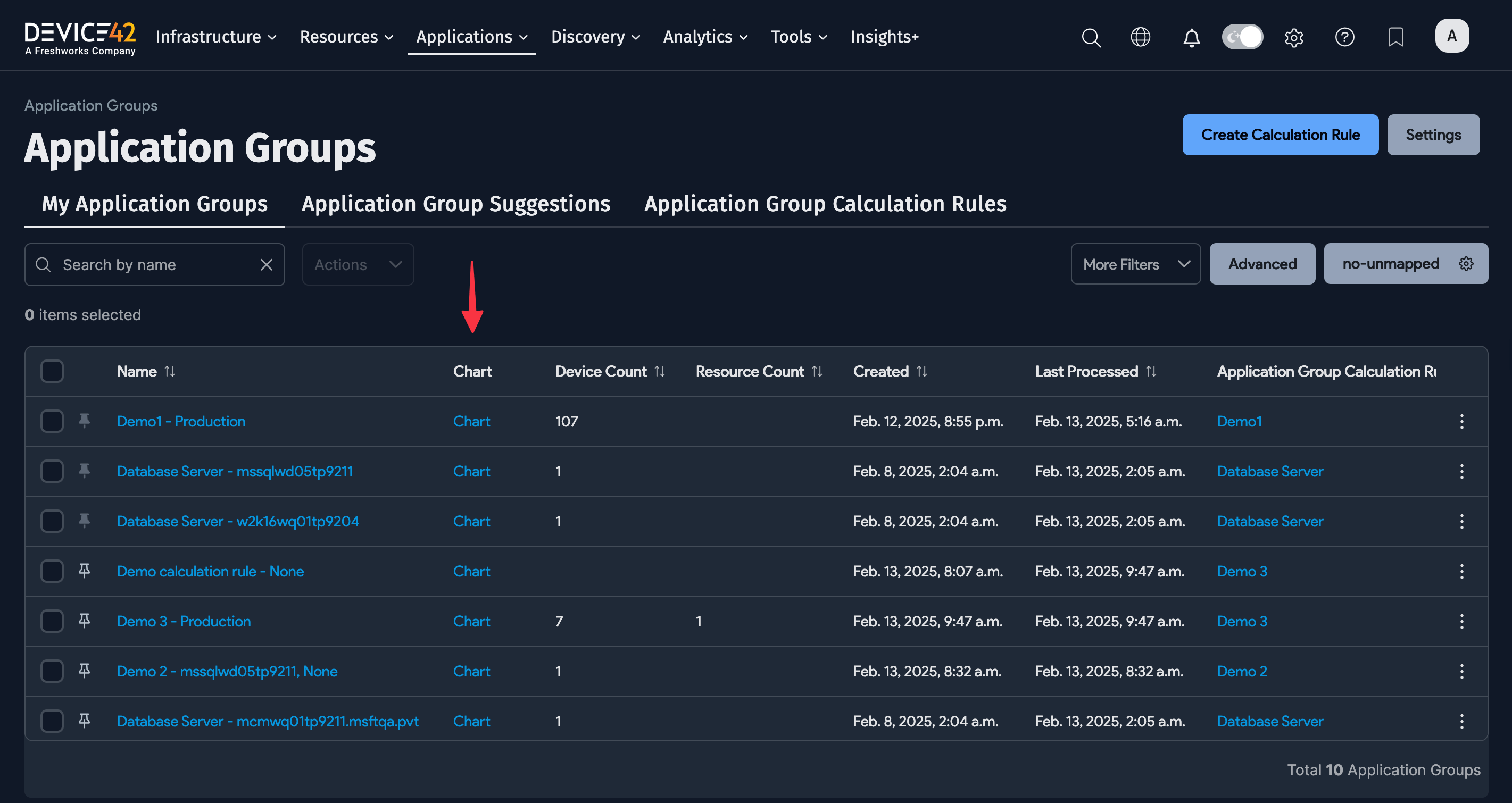
The Application Group chart displays the relationships between Application Components, Services, and Devices.
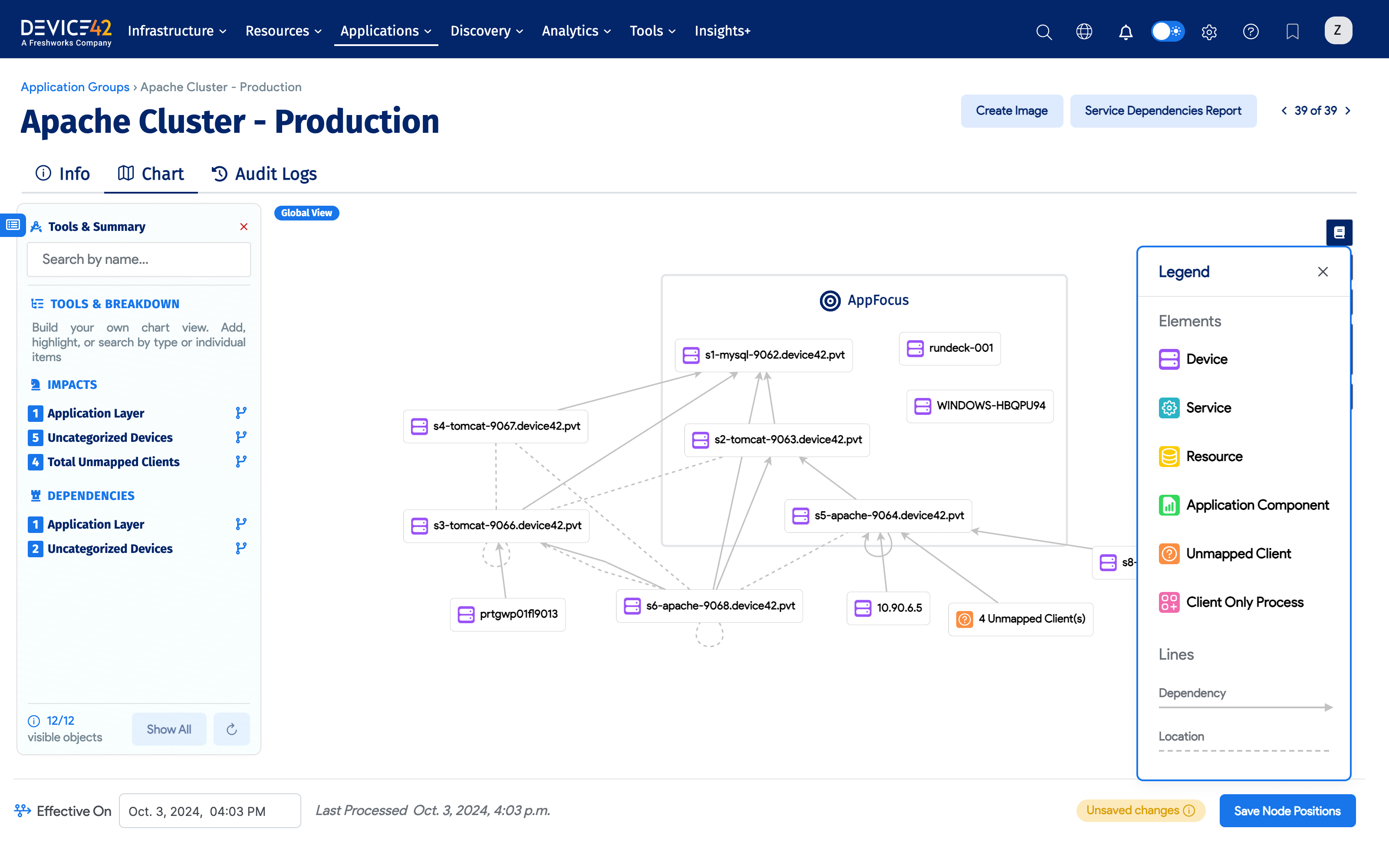
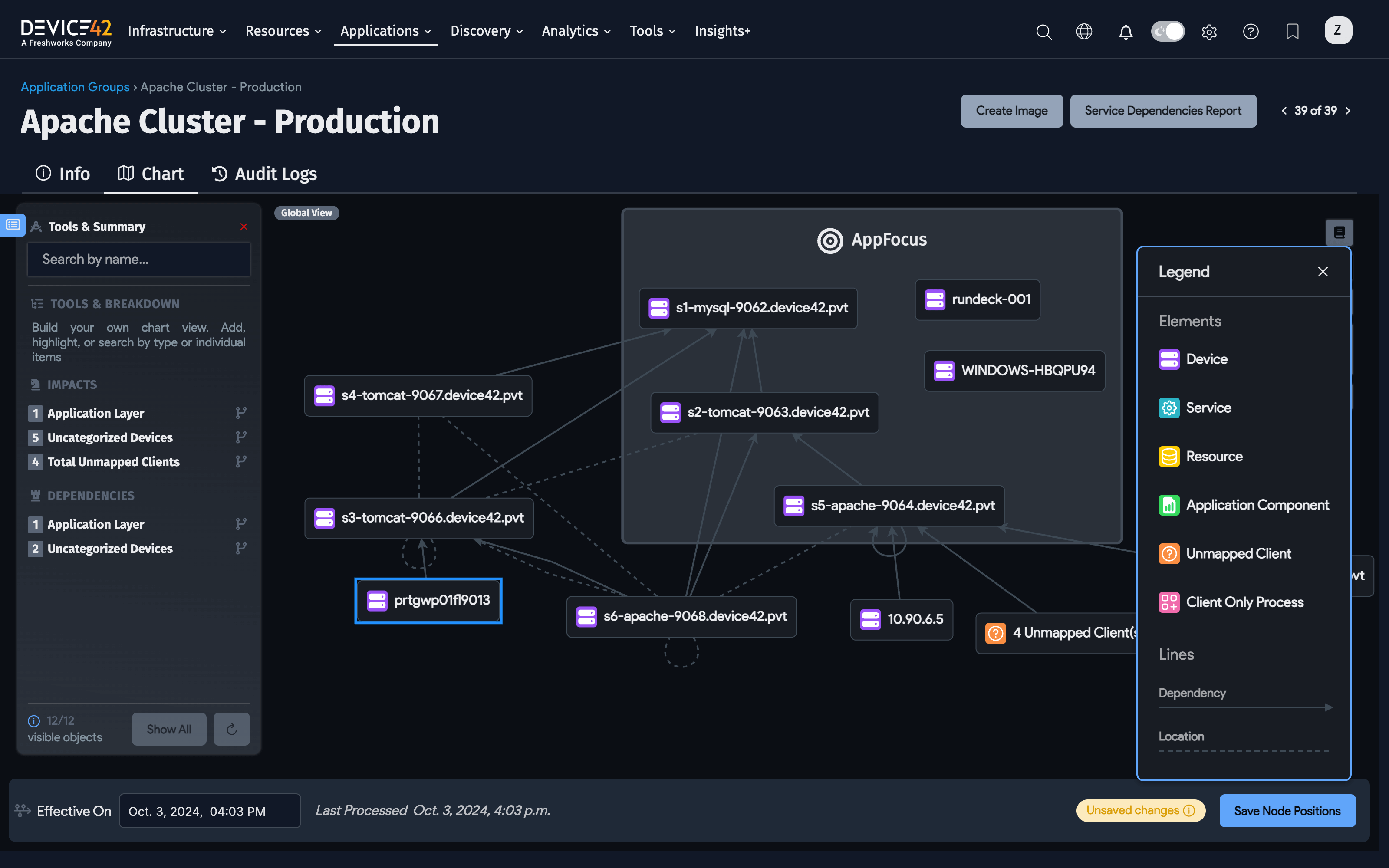
Chart Usability Tips
Use the controls in the left panel to highlight or search for dependencies and items of interest.
You'll be prompted to save the position of the nodes after you've moved them, although you can also save preemptively by clicking the Save Node Positions button.
-
Focus on a node in the chart view using the microscope icon.
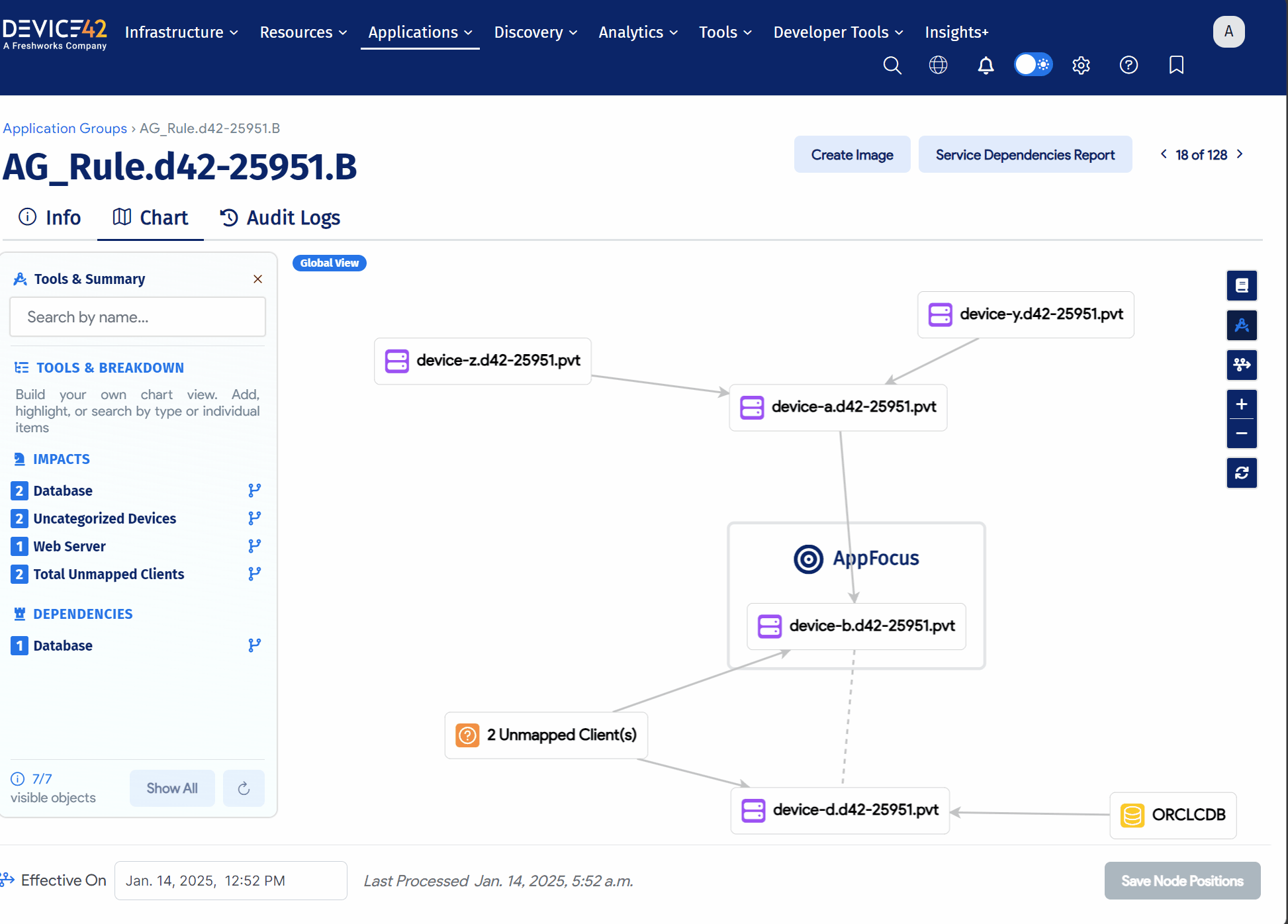
Relationship Lines and Metadata
Application Components are displayed as stand-alone nodes, and are connected to any associated services and devices via dotted lines.
Impact charts include a Global View and a Local View. Only Application Components that are focus items are displayed in the Global View.
Click the dependency lines in the Global View to open the Local View panel displaying those relationships.
- From the Local View, click the dependency lines between services, processes, and devices to see connection-related details and statistics: Listener IP/FQDN, Protocol, Port, and Net* Average Connections over time (if available).
- The dotted lines link to Application Components: the Reason and What is affected values are displayed (if available).
If you don't see this historical communication metadata, make sure you have the Store and Display Connection Metadata option enabled in the Visualization options of that Application Group's Calculation Rule.
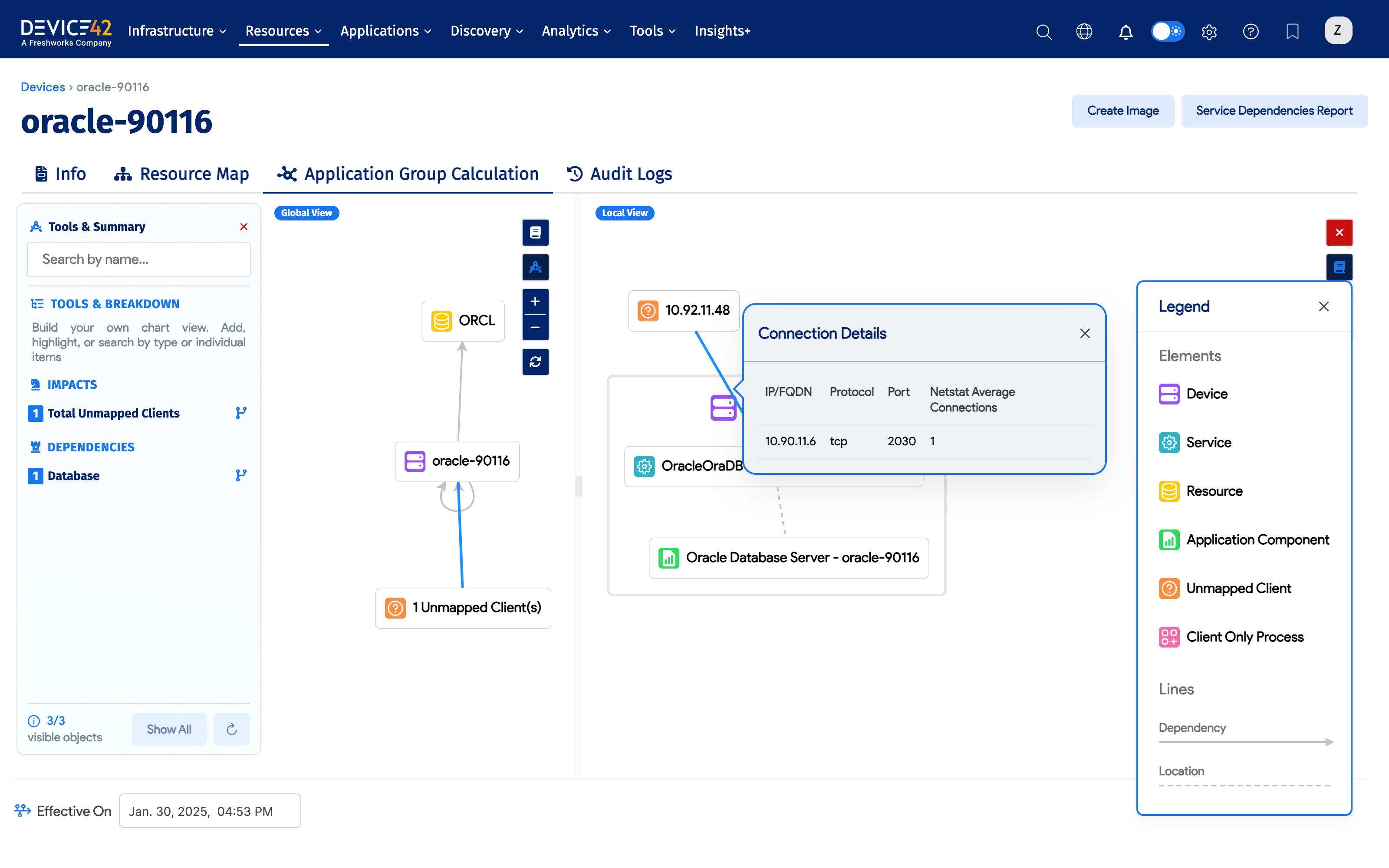
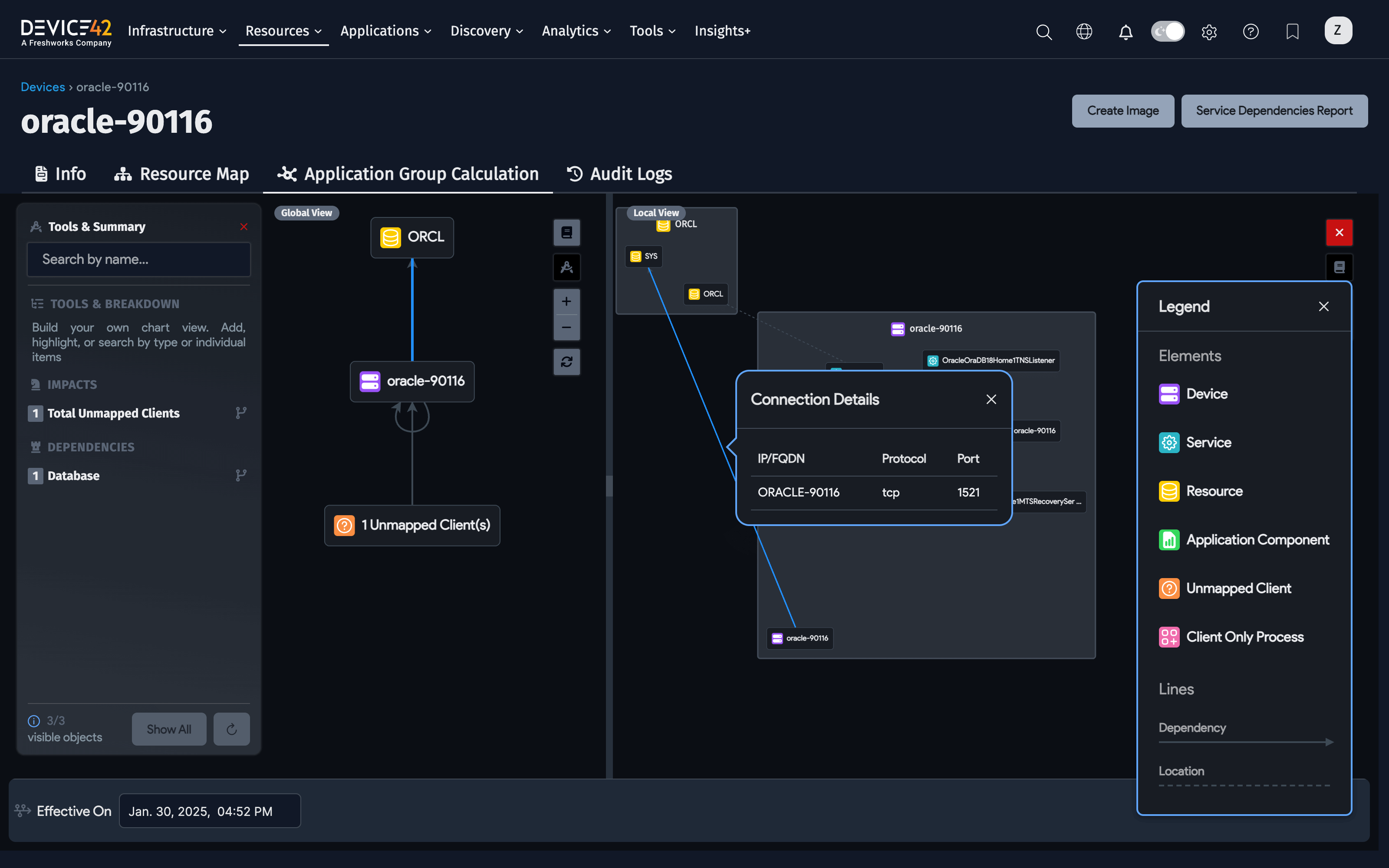
You can also run a Service Dependencies Report from the chart view page. The Services Dependencies report details all the communications for devices within an Application Group.
Chart List View
You can view the devices and root resources displayed in the chart in a handy, tabulated list view. Note that this chart list view is only available via the Chart tab, and not via the Breakdown panel on the AG main page.
-
Click the Chart tab.
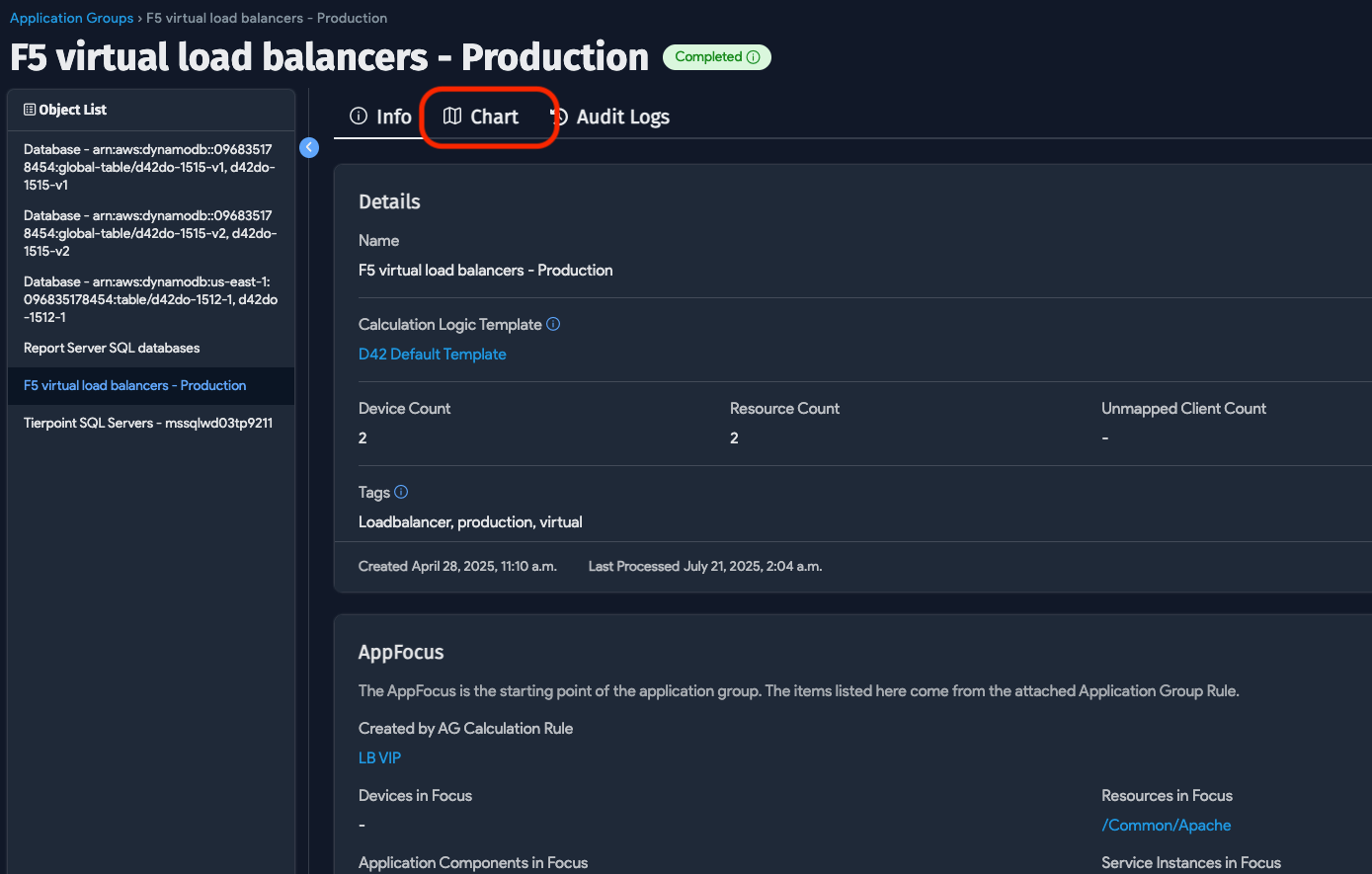
-
Click the list icon button to the right of the chart.
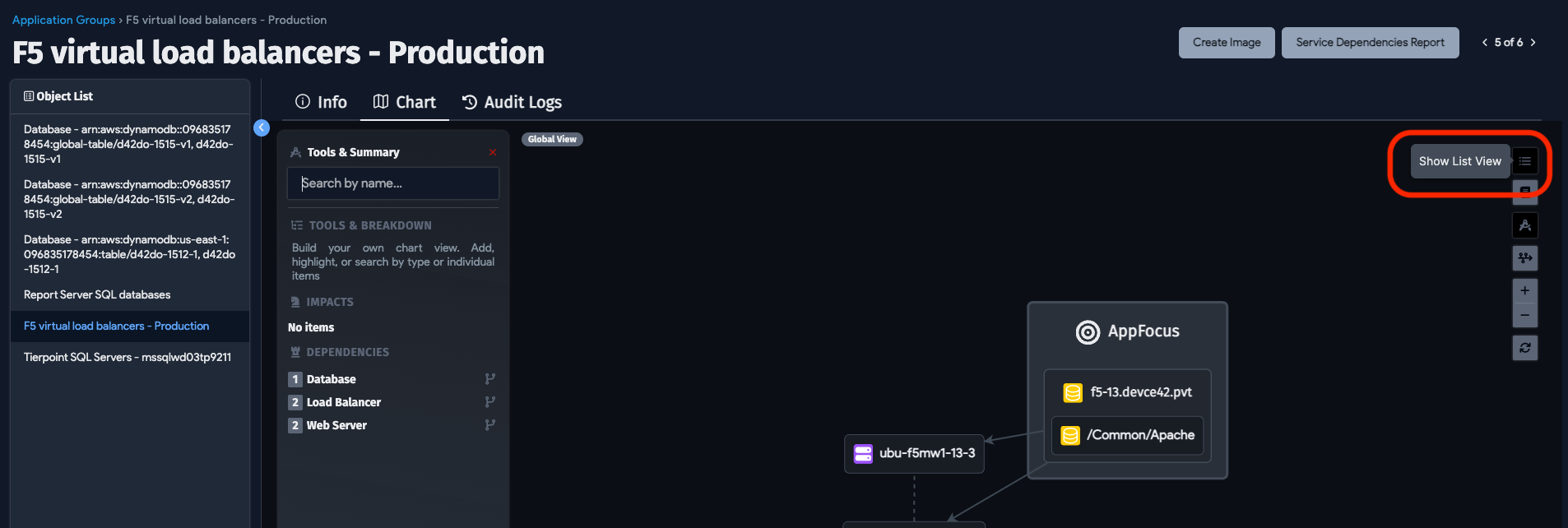
-
You can use the links in the list view to navigate to the details page of the listed items and toggle back to the chart view.
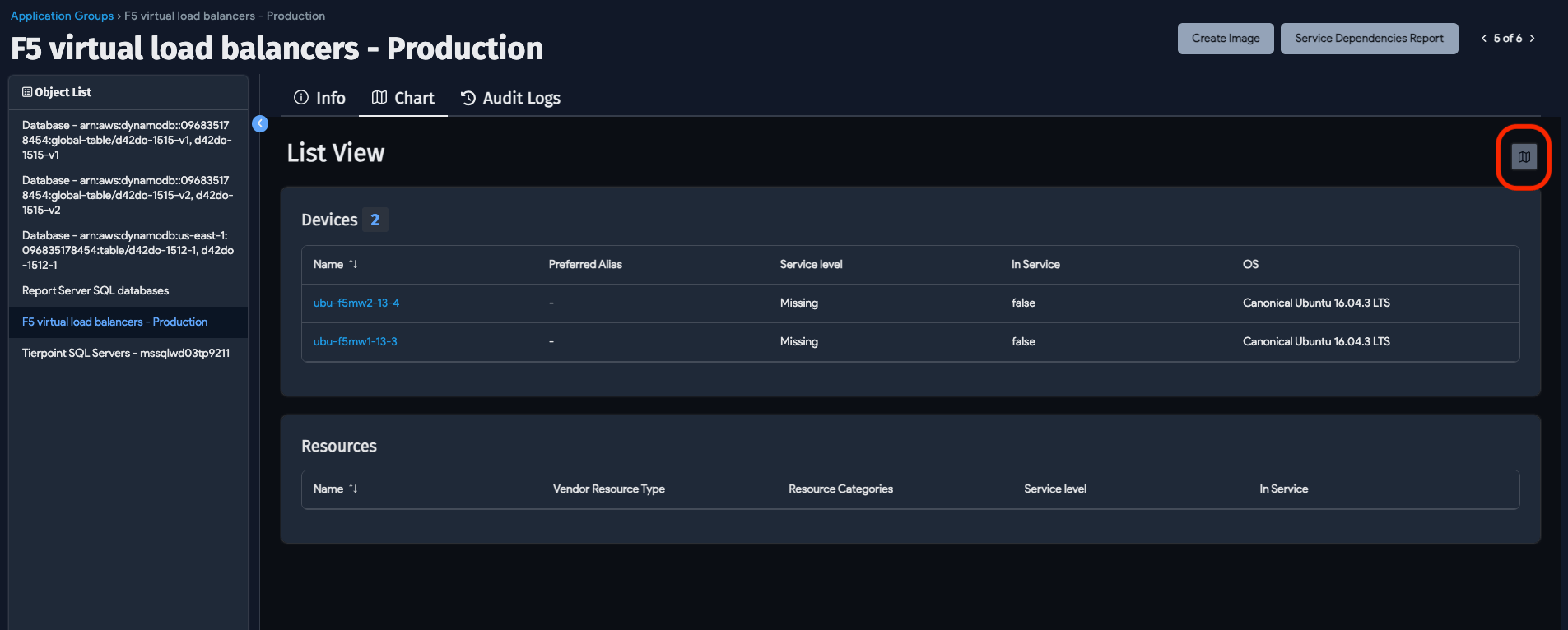
Application Group Timelines
Application Group timelines make it easy to see how a given group has changed over time. Changes to services and resources are marked along the timeline, indicating when they were added or removed from the group.
The timeline can also be used to navigate quickly to specific dates of interest, including the dates that changes occurred.
-
Click on the Time Settings icon to open the timeline.
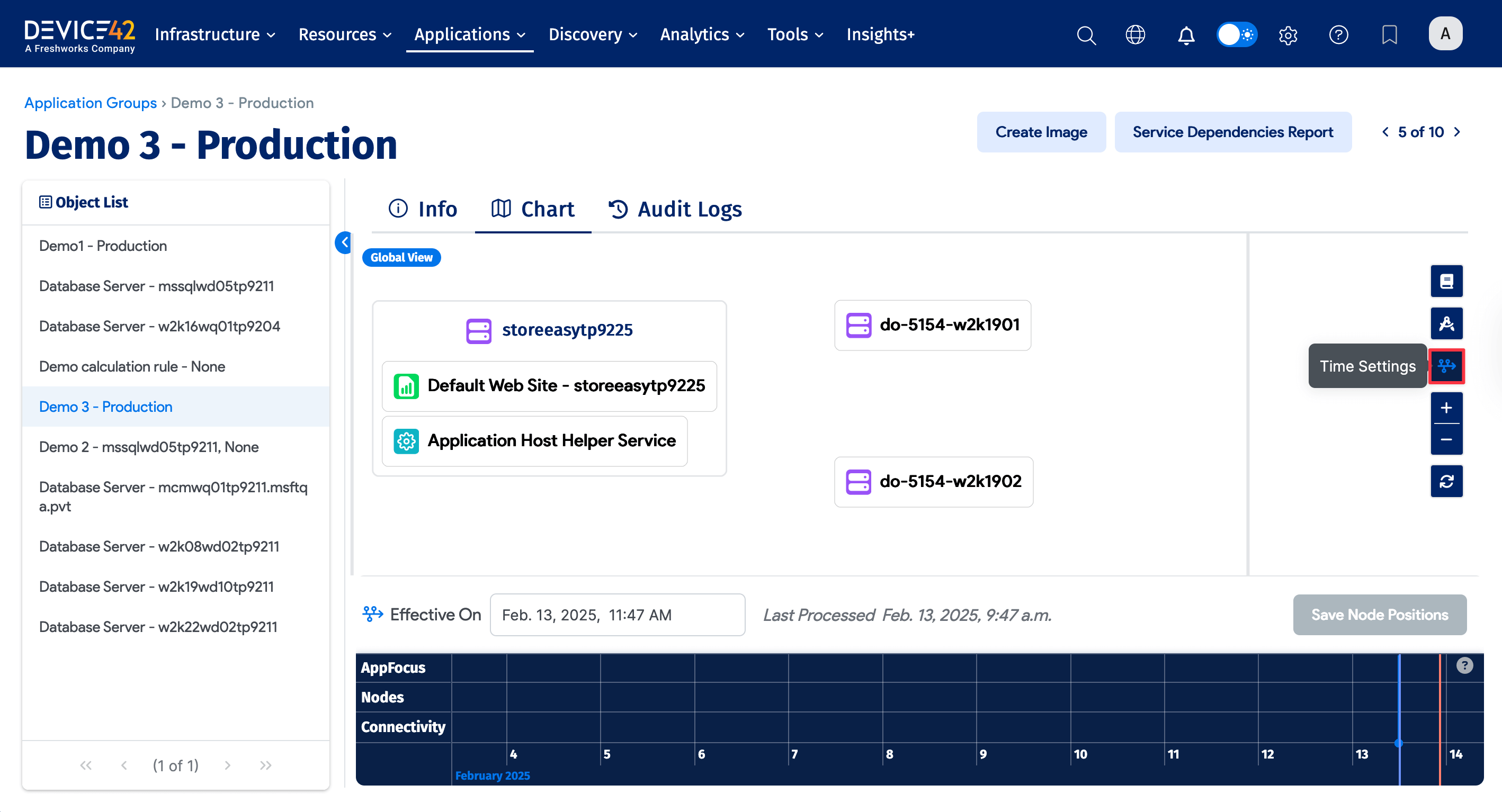
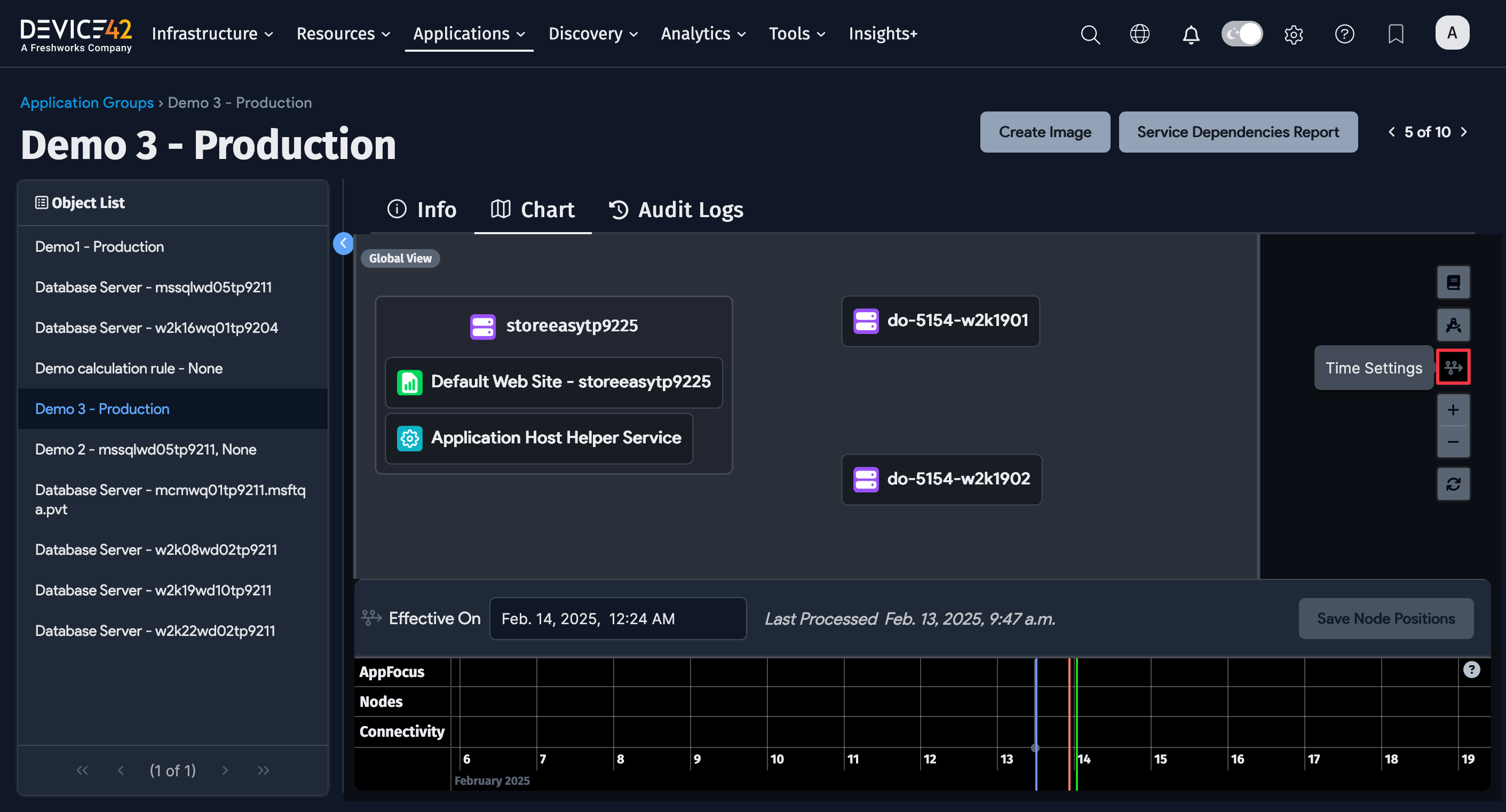
-
In the timeline, select a vertical point at the bottom of the chart to see a summary of changes. Click Show Details to open a panel that lists and provides links to the changed items.


-
You can view the changes to dependency and non-dependency Application Group relationships on the timeline. Non-dependency relationships include connections with Application Components and certain resource-to-resource associations.
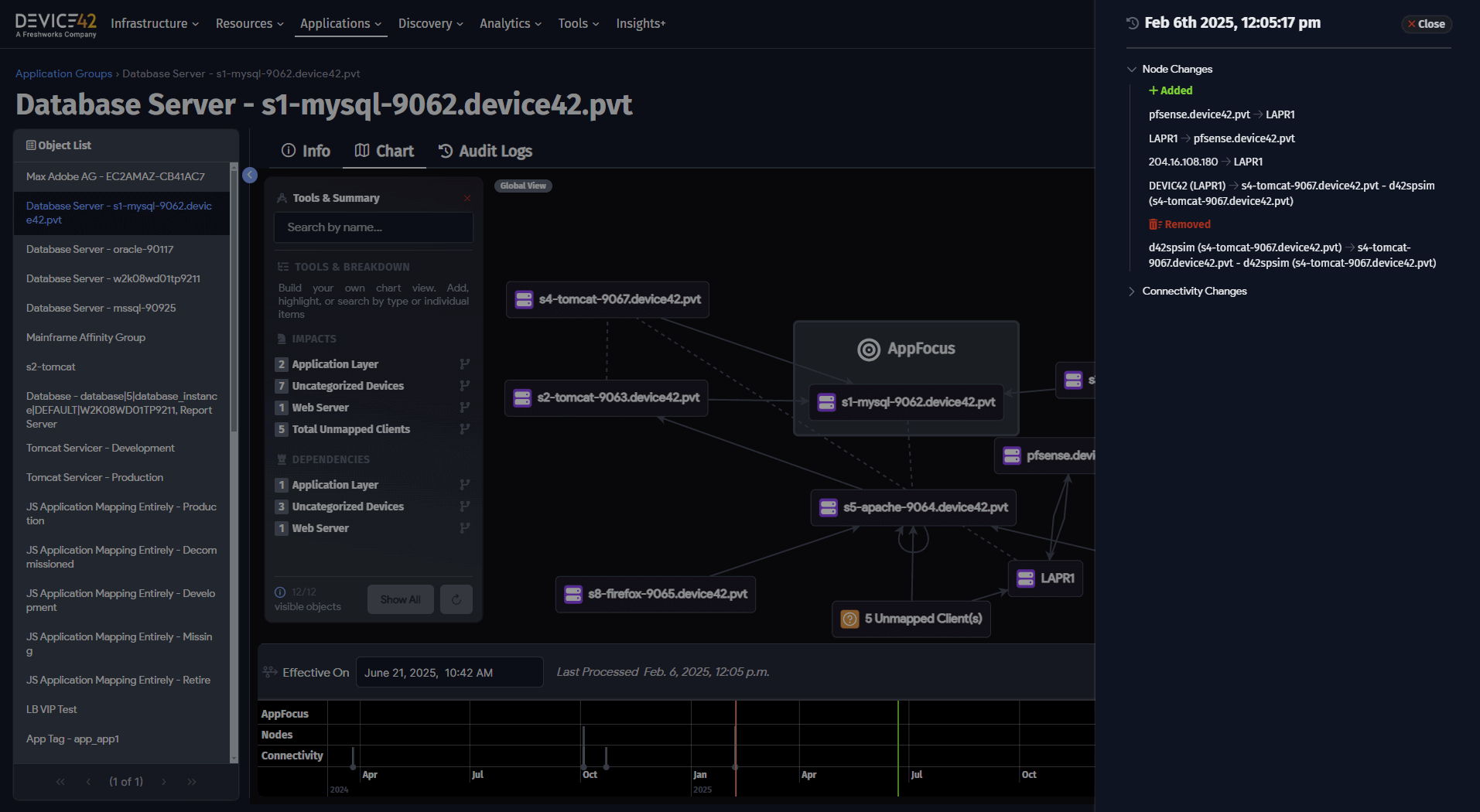
Devices with Application Group Calculations
With Application Group calculations, you can view an Application Group calculation from just about any device under the Application Group Calculation tab.
On the Application Group Calculation page, you can see the dependencies of the selected device or database. You can click on a node to view its details and click on a connection line to open the Local View panel of the chart.
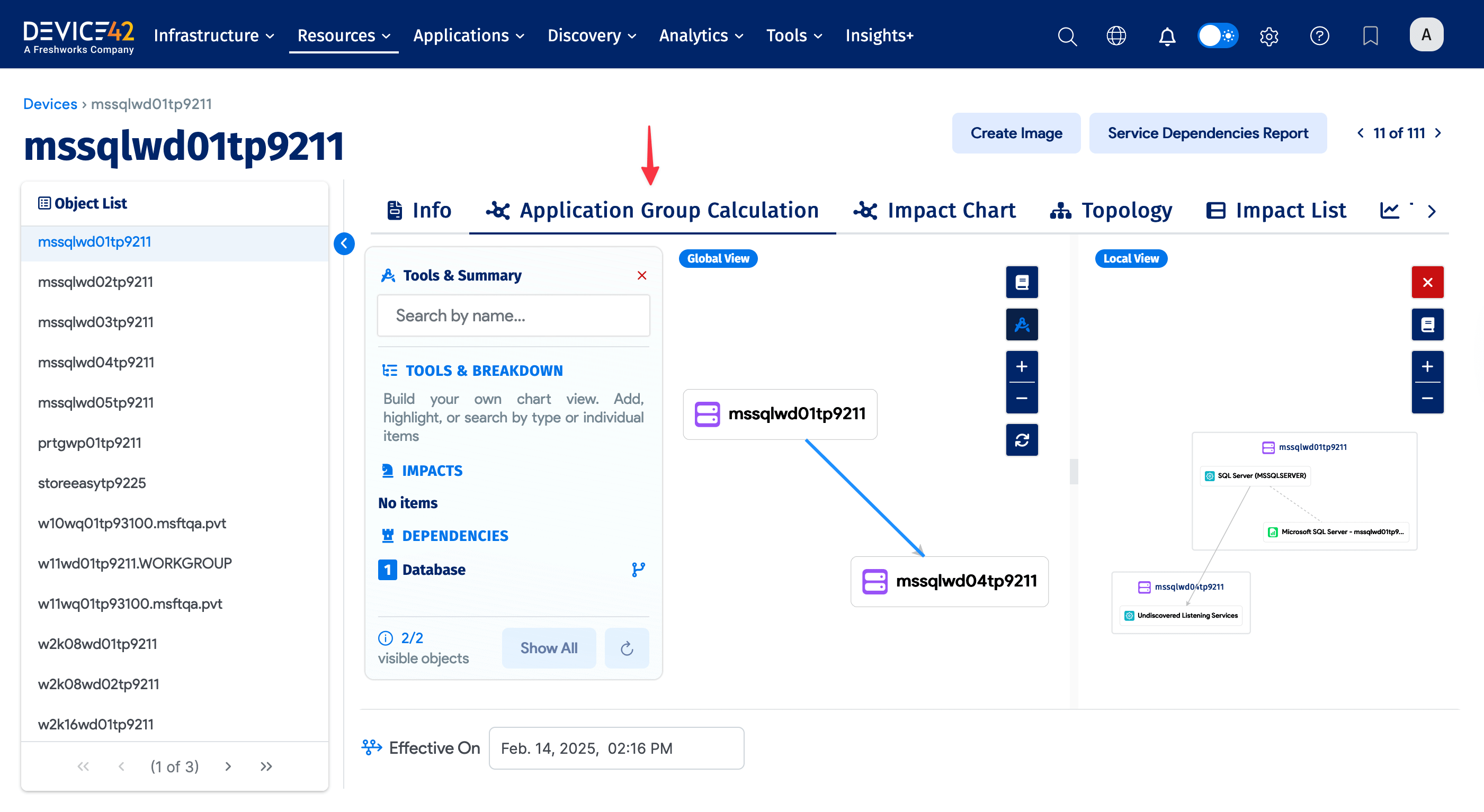
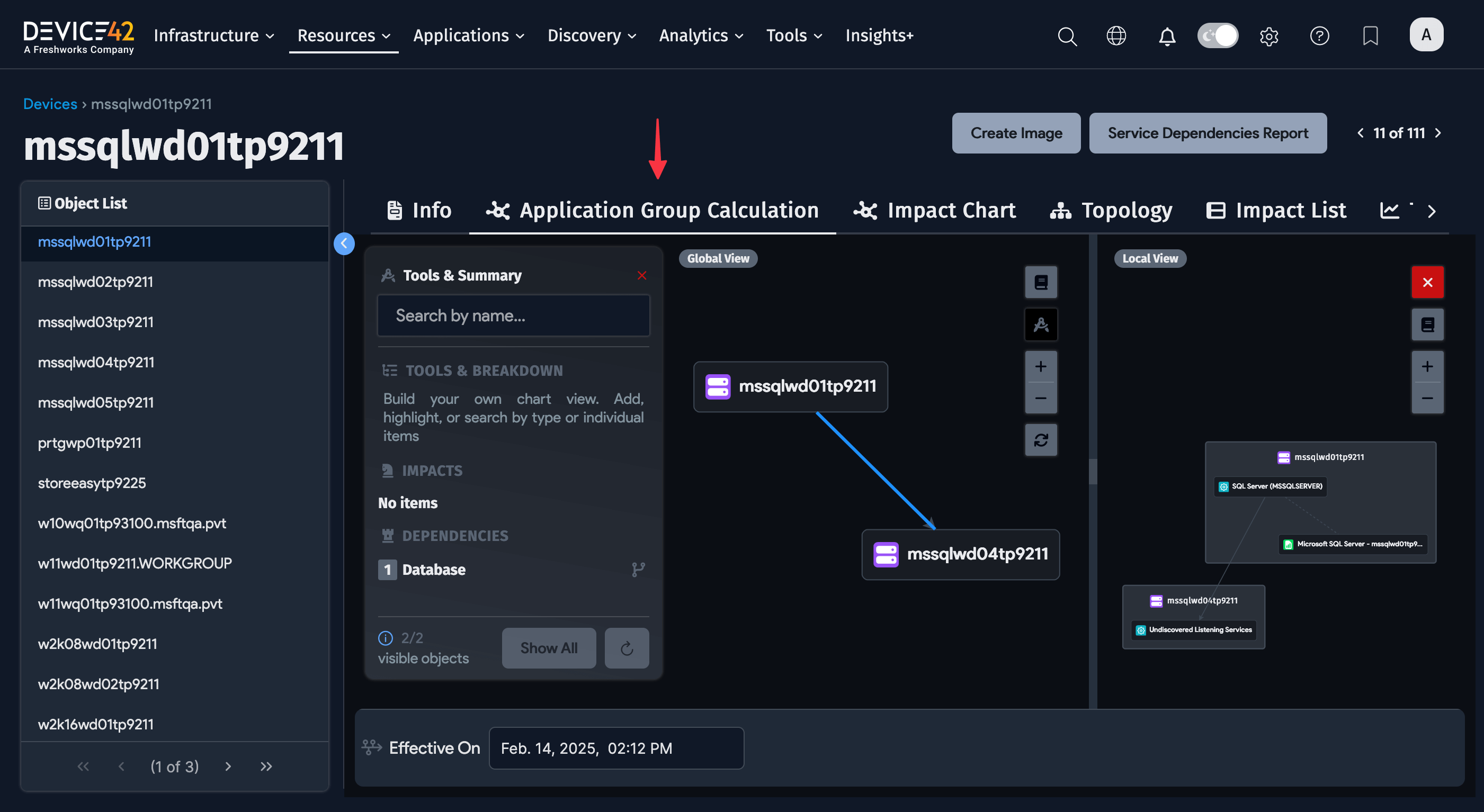
You can easily switch to the following tabs from this view:
- Info
- Application Group Calculation
- Impact Chart
- Topology
- Impact List
- Trends
- Audit Logs
Filter Devices by Recent Calculations
Filter the Devices list page to find any records that show Application Group calculations associated with client or listener devices in the last 30 days.
Apply the following Advanced Filter:
has_affinity_calculation_data="true"


Add Application Groups to Business Services
You can quickly and easily add multiple Application Groups to an existing or new Business Service.
-
Select Application Groups on the list page and choose Add Application Groups to Business Applications from the Actions dropdown.
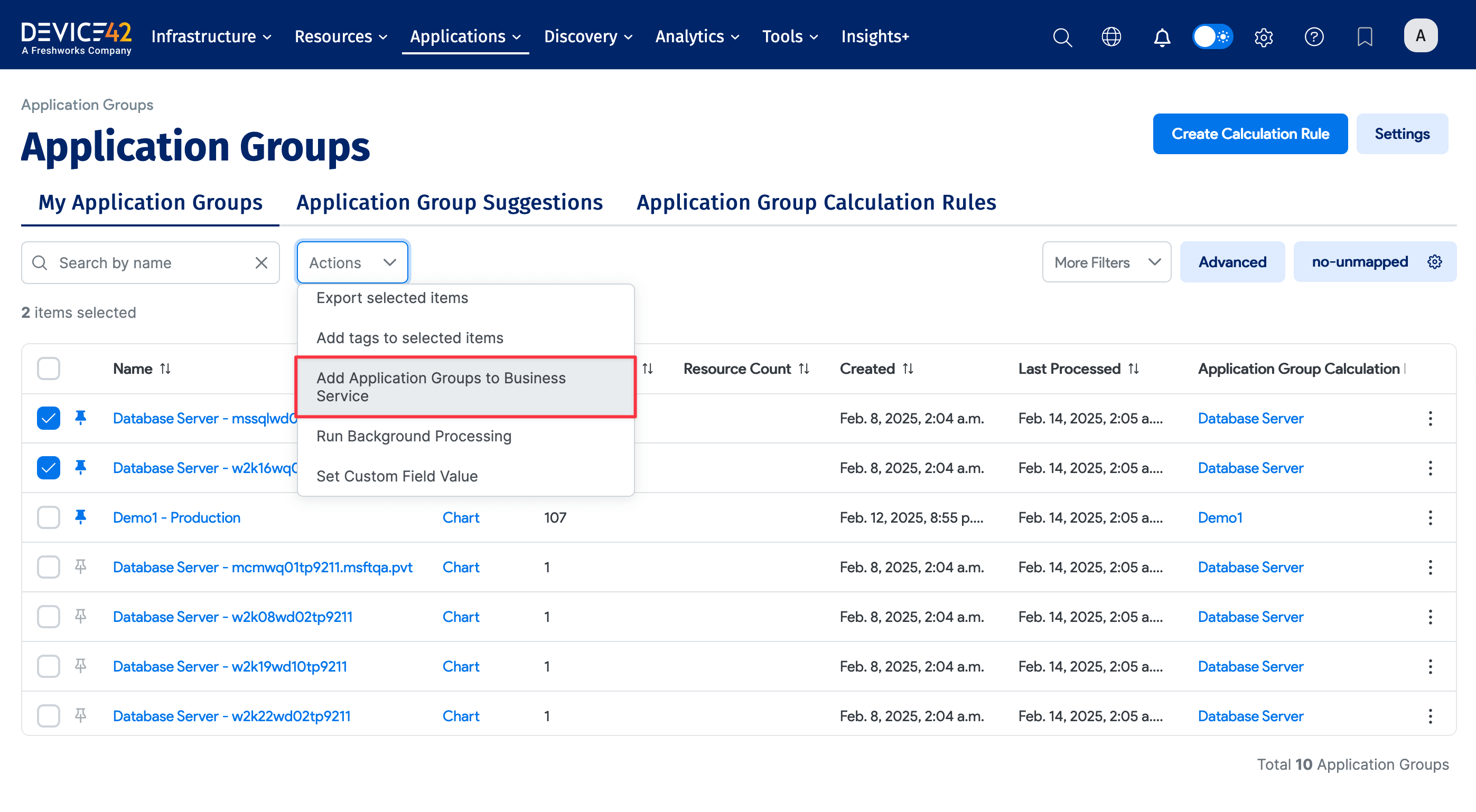
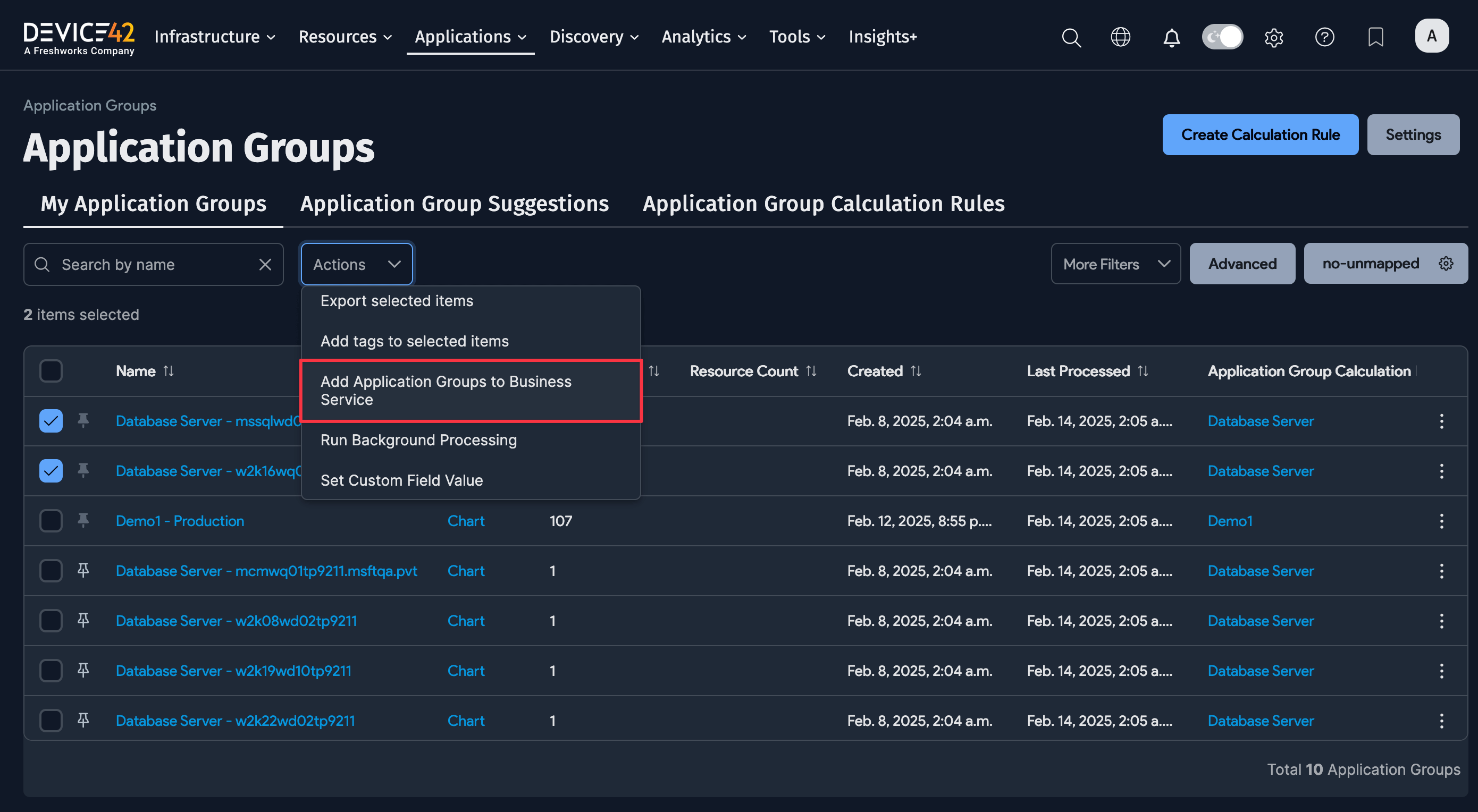
-
Select the Business Service you want, or add a new one, and click Add objects to Business Service.


-
The Application Groups added will be visible on the Business Application canvas. The added devices are given colors based on their Application Groups. Up to five different colors can be used to indicate which devices are from which Application Groups.
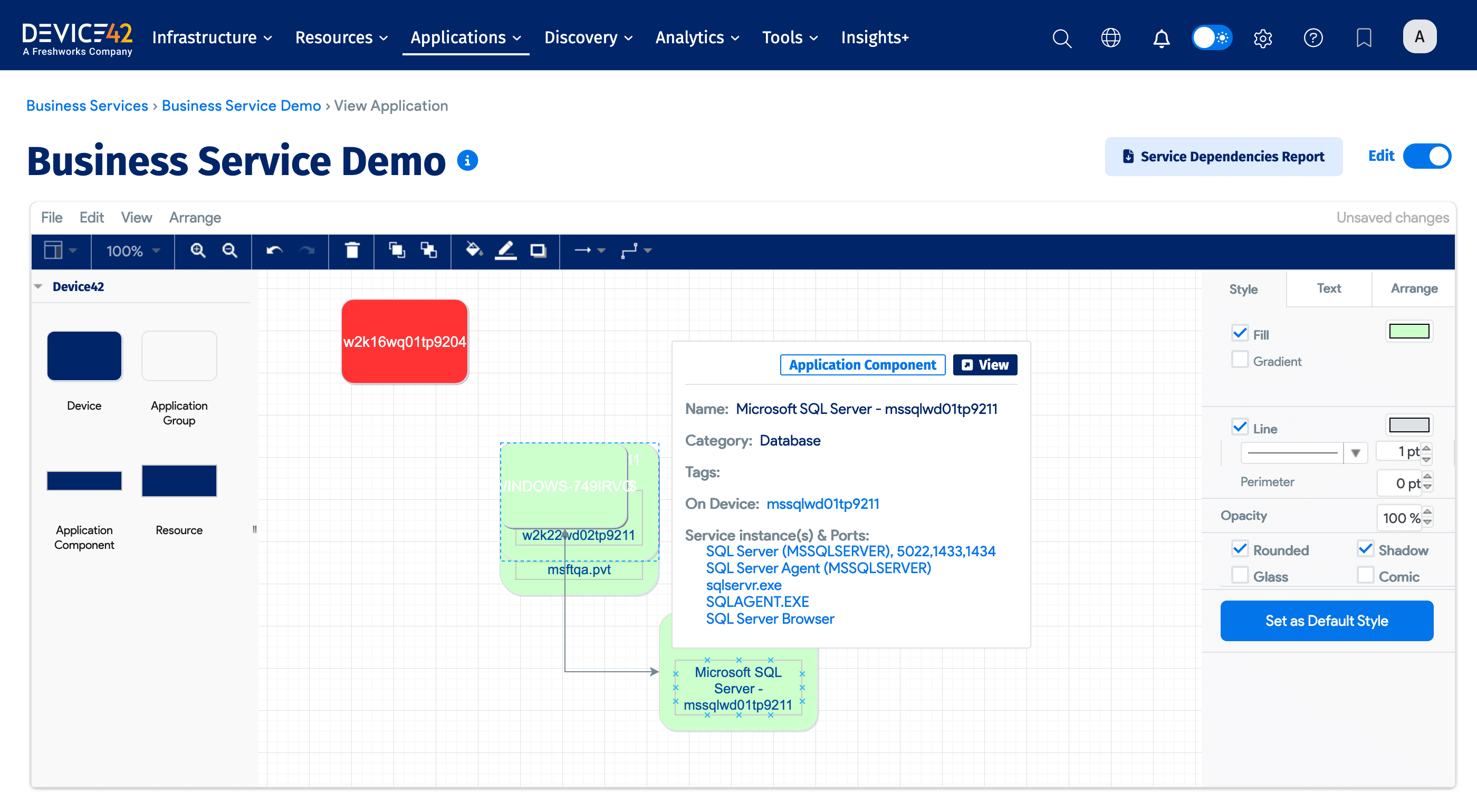
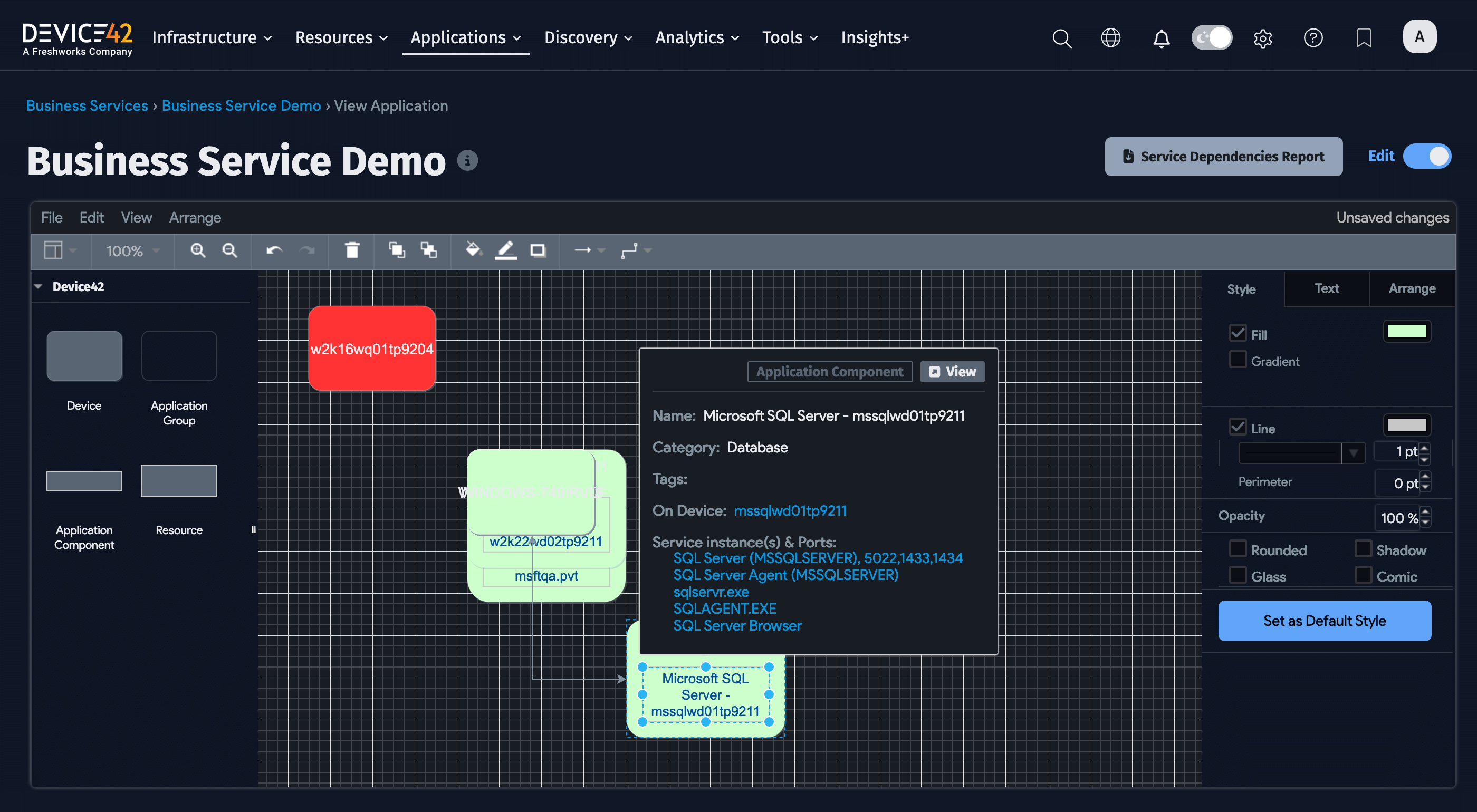
Business Service Dependency Alerts
Business Services created from Application Groups can be configured to send alerts when dependencies are added or removed. There is a metadata linking Business Services to the Application Groups they were created from.
Alerts on Business Applications (now Business Services) prior to v19.05 will no longer work. Please re-add the Application Group to the Business Service to enable alerts. Business Application alerts have been improved to be less noisy, more accurate, and more targeted.
Navigate to Analytics > Setup Alerts and then click Create:
- Select Business Service from the available Rule Types.
- You can choose to be notified when a New Application Group [is] Found or when an Application Group [is] Removed.
- Choose the Business Service you want to monitor from the Available objects list.
- Edit the Notification Template as needed.
- Add a webhook endpoint to receive the alert, if required.
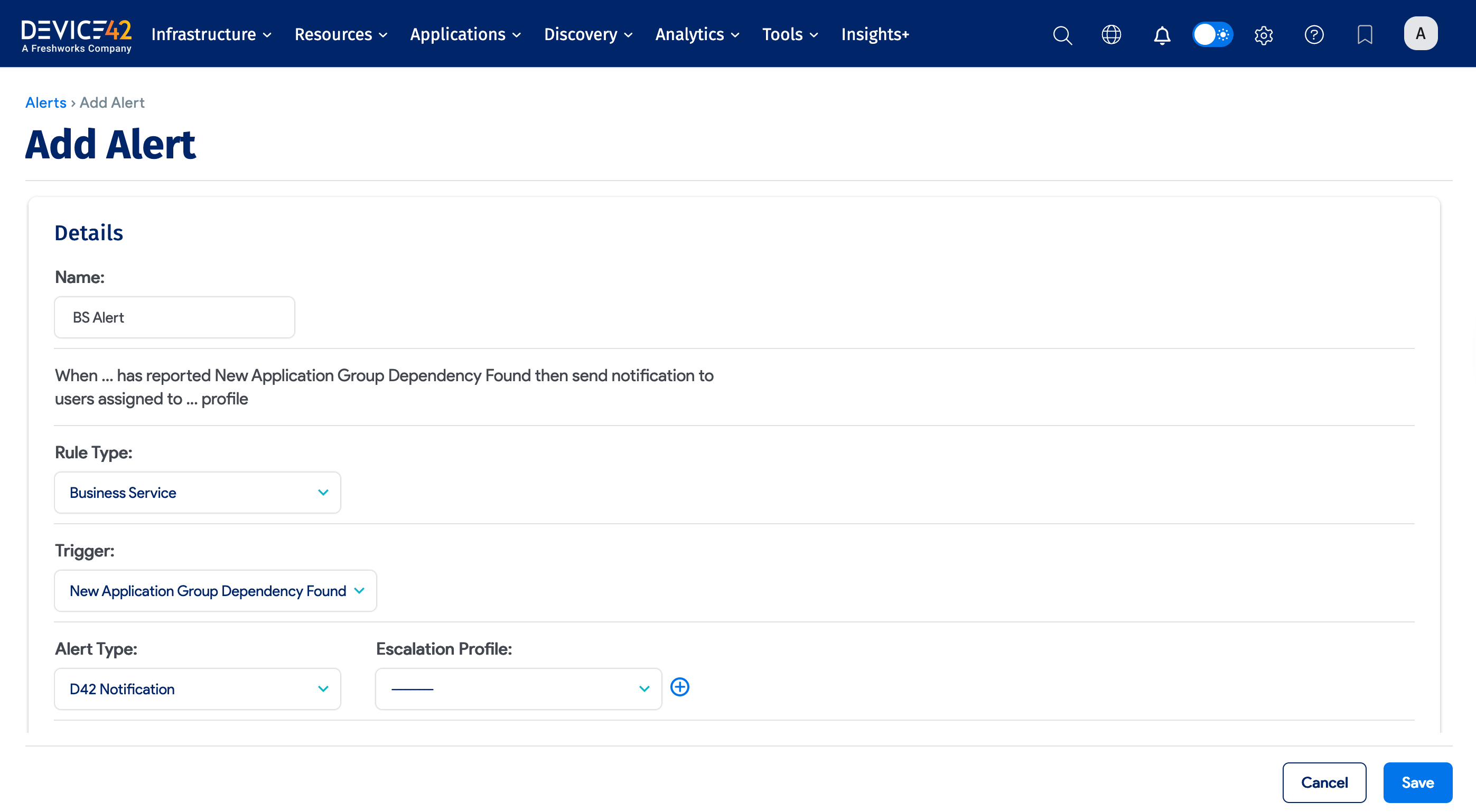
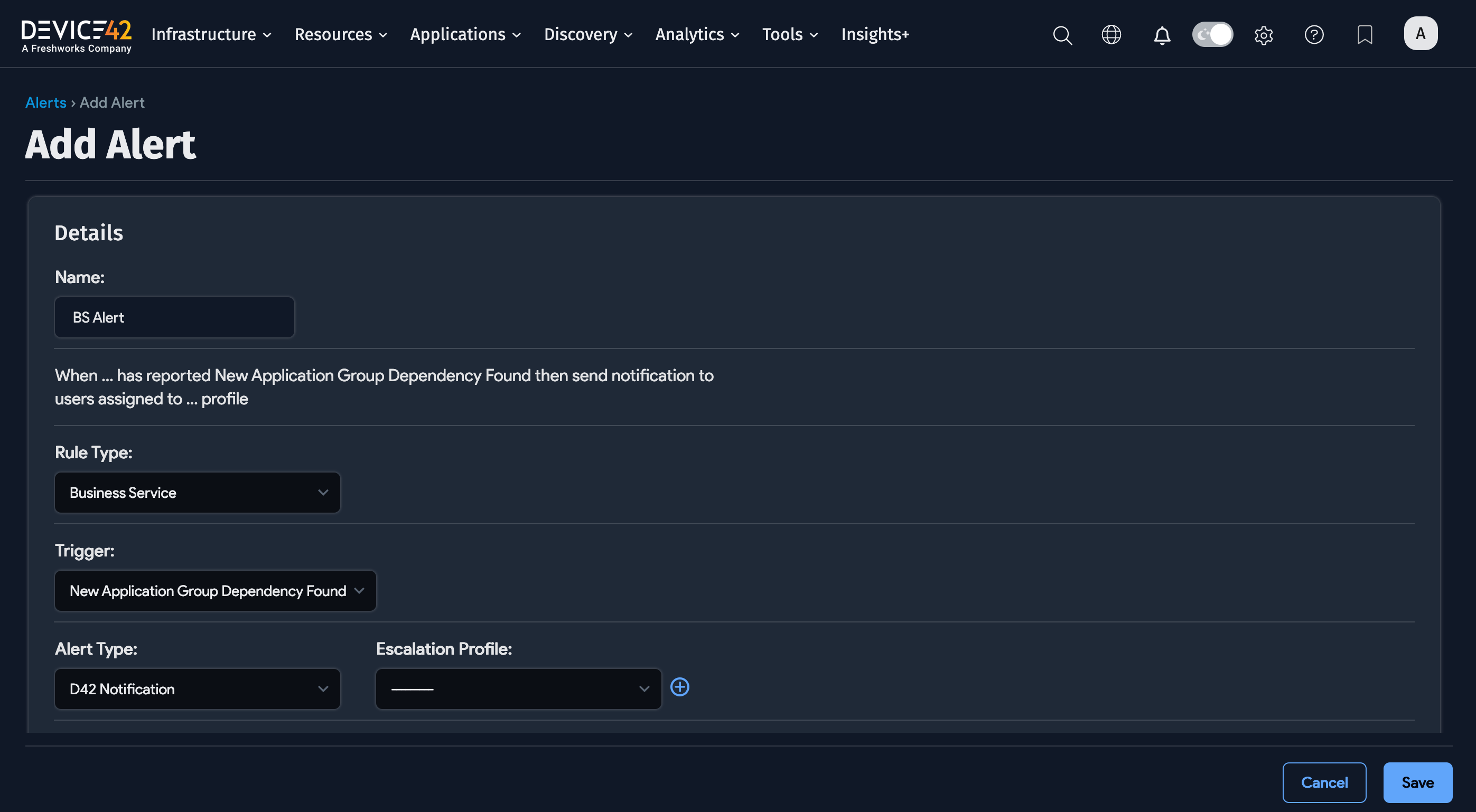
Application Components
Any Application Component Categories associated with a device used to create an Application Group will also be associated with that Application Group.
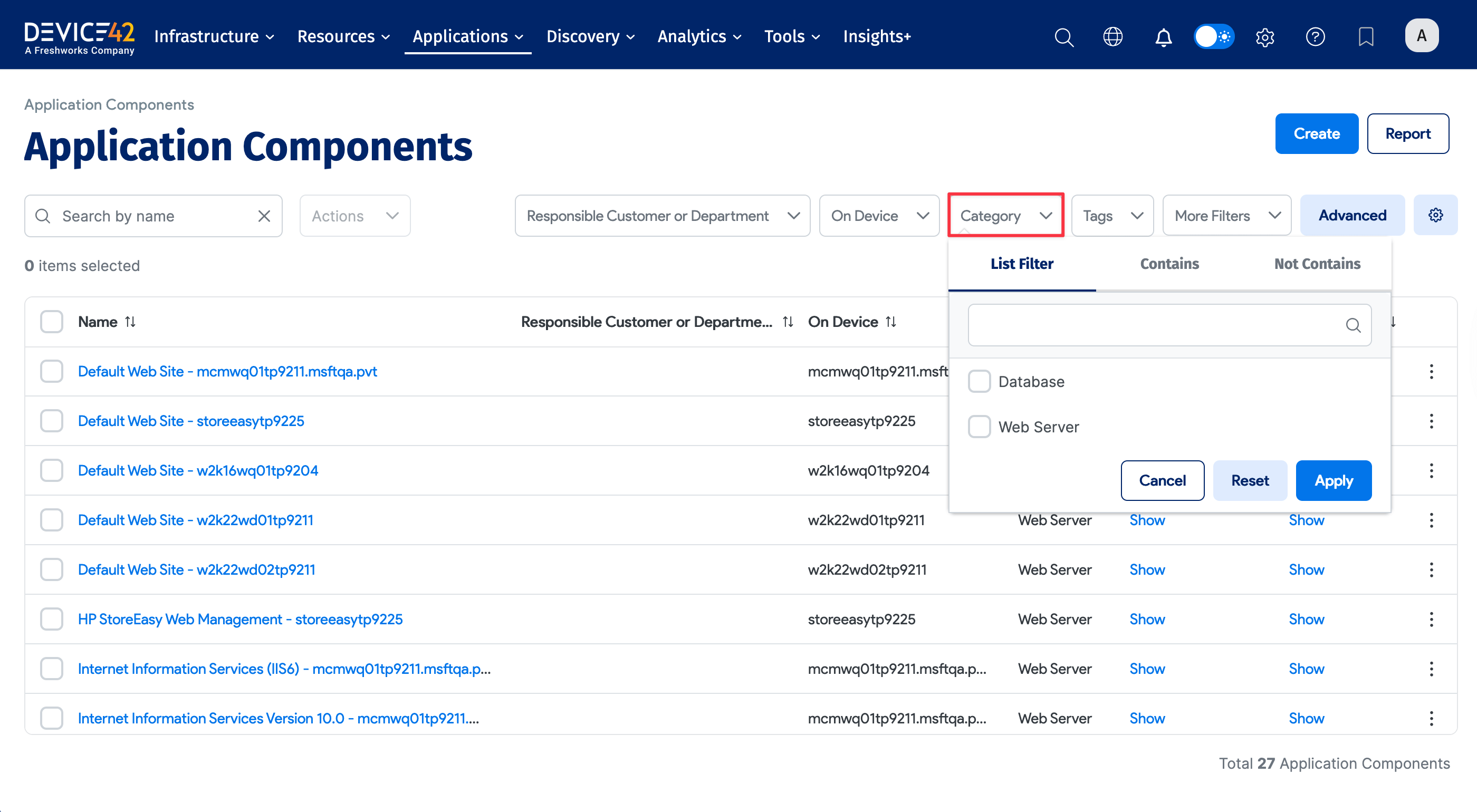
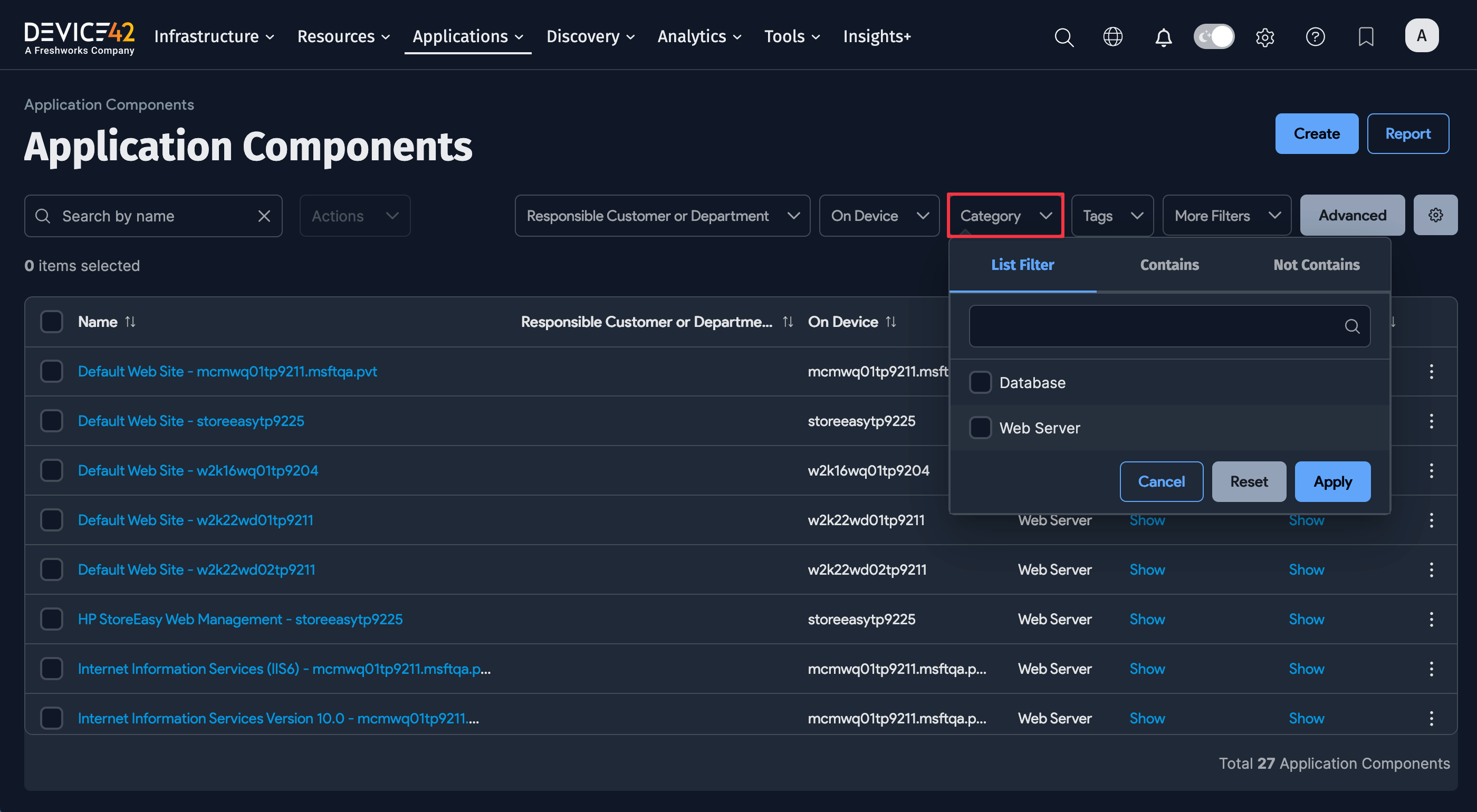
You can now quickly drill down to your discovered Database impact Application Groups or Web Server dependency Application Groups at the click of a button.
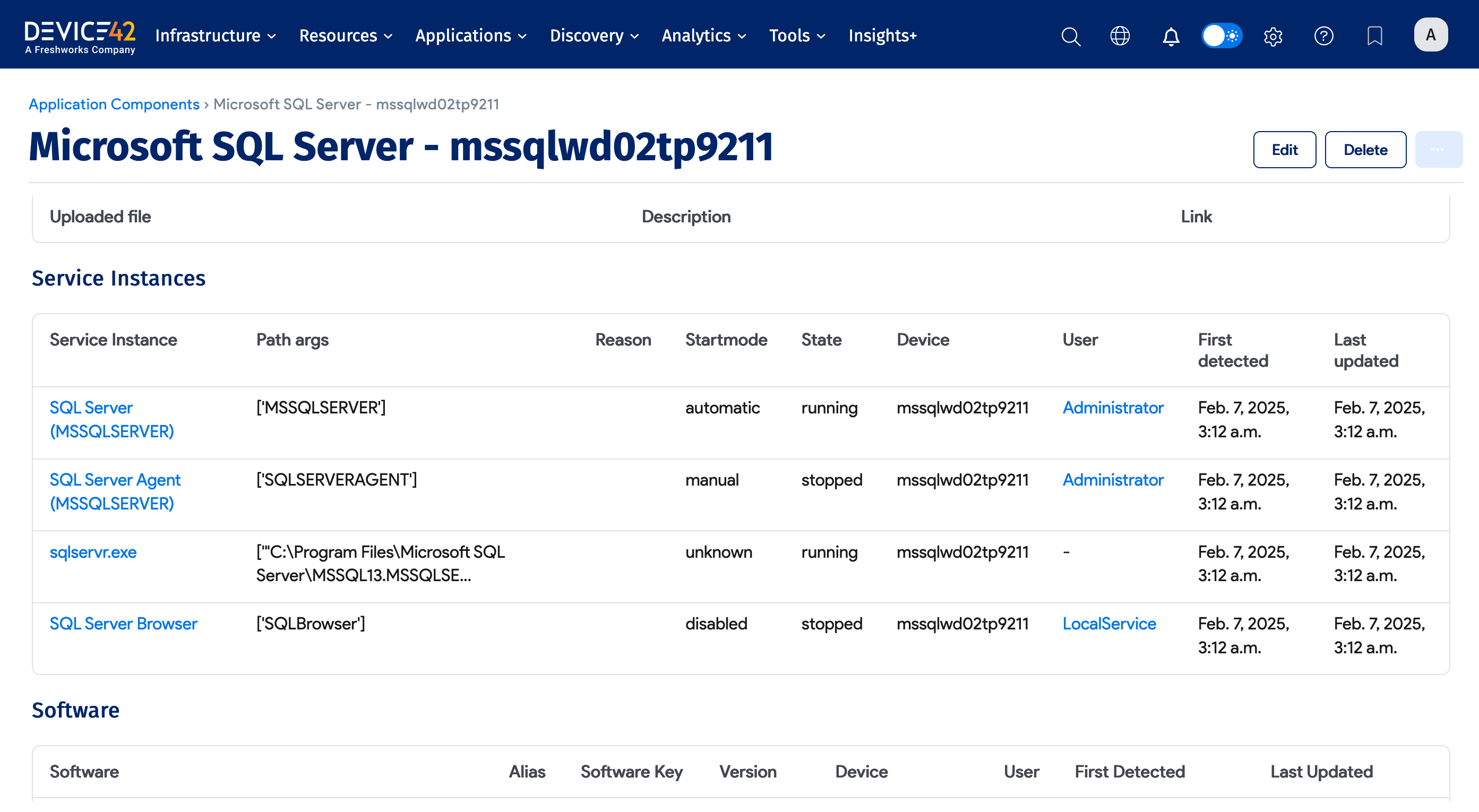

Pinned Services (Legacy)
Application Groups use the concept of pinned services. Pinned services represent the core dependencies of your infrastructure, and discovered database services are automatically pinned by default.
Pinning Other 'Core' services
Application Groups are only generated for your Core services, which are those services that have been pinned in Device42. If you don't see the Application Group Impact Chart you're looking for, ensure you've pinned the relevant services. Note that only pinned service listeners will lead to the formation of an Application Group.
Navigate to your critical Core services and pin them using the dropdown menu:
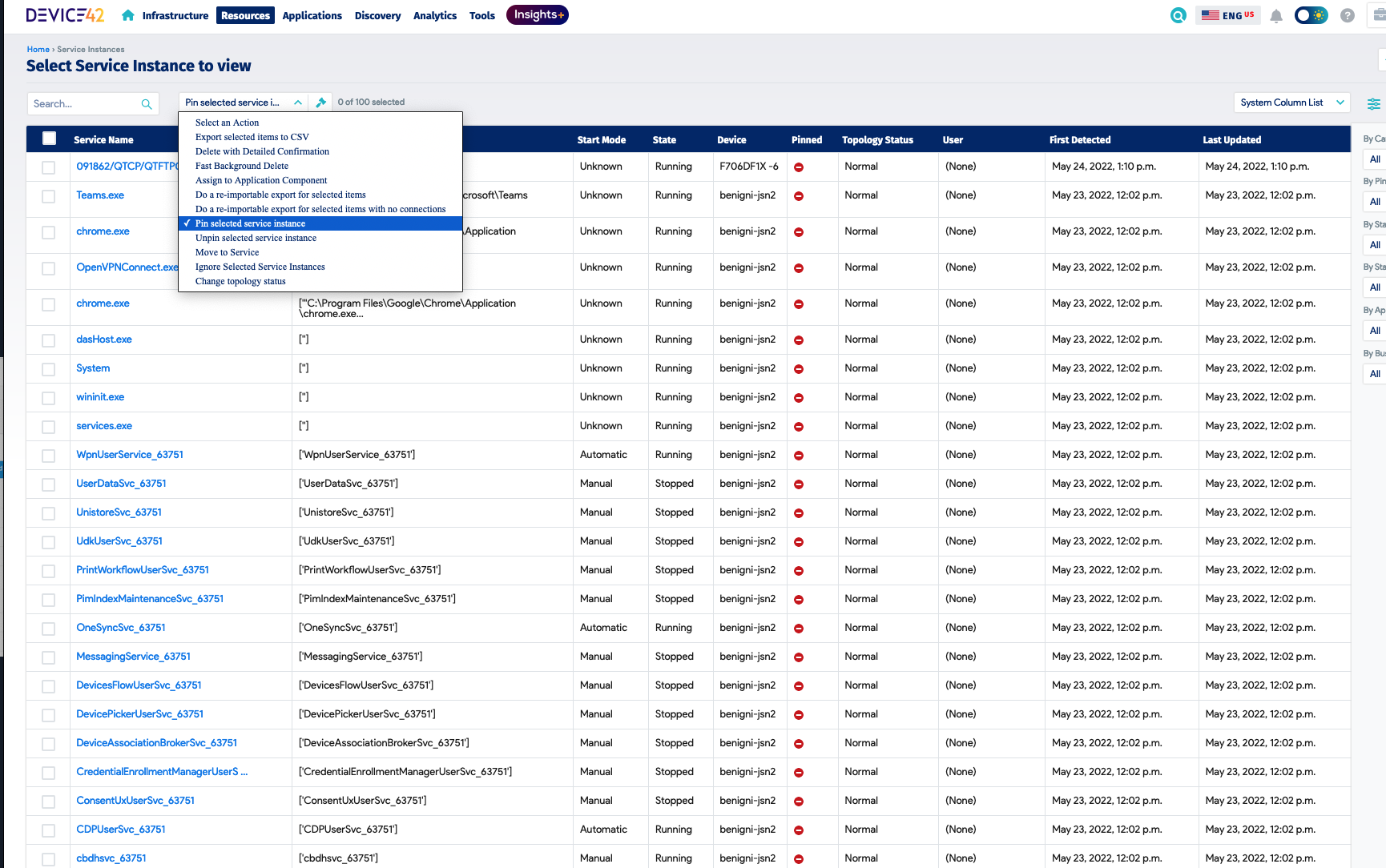
Database Services - Pinned by default
Database services are considered Core services and are therefore pinned automatically. Notice the green checkmarks indicating they are already pinned:
